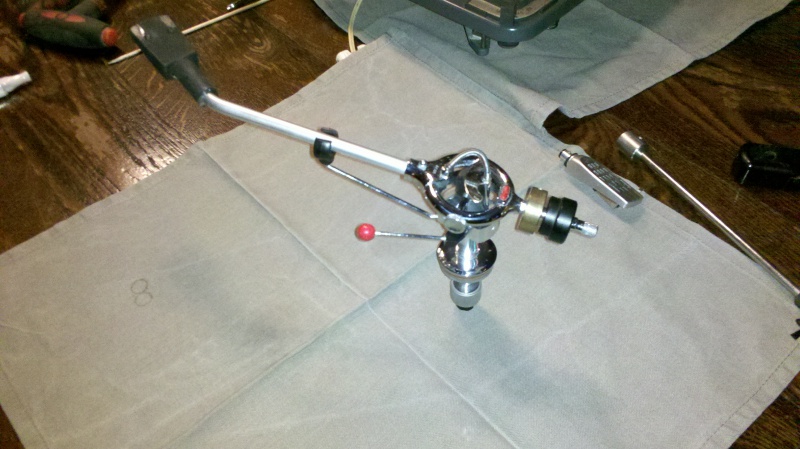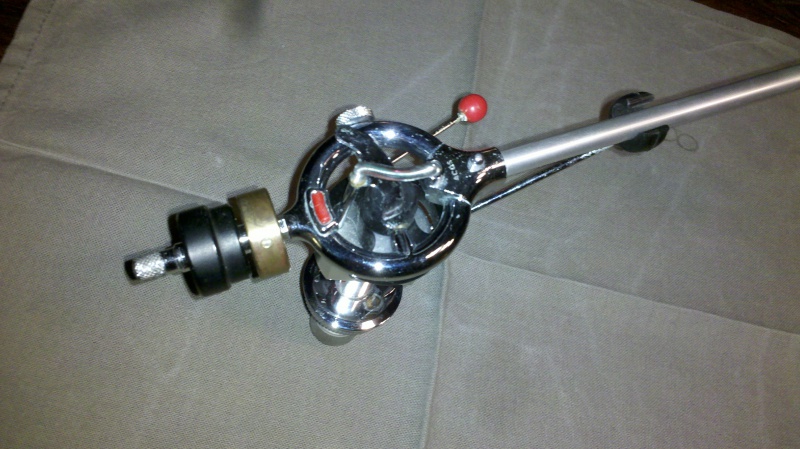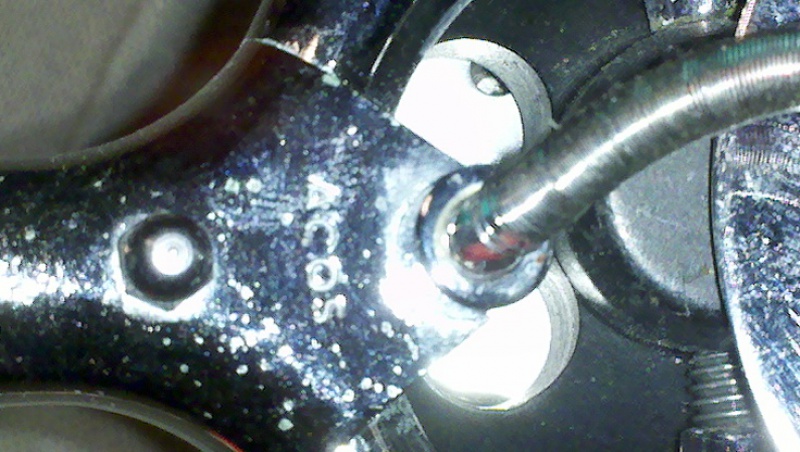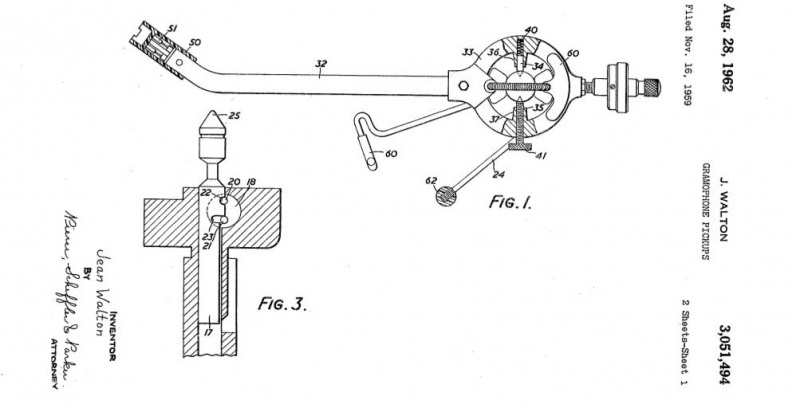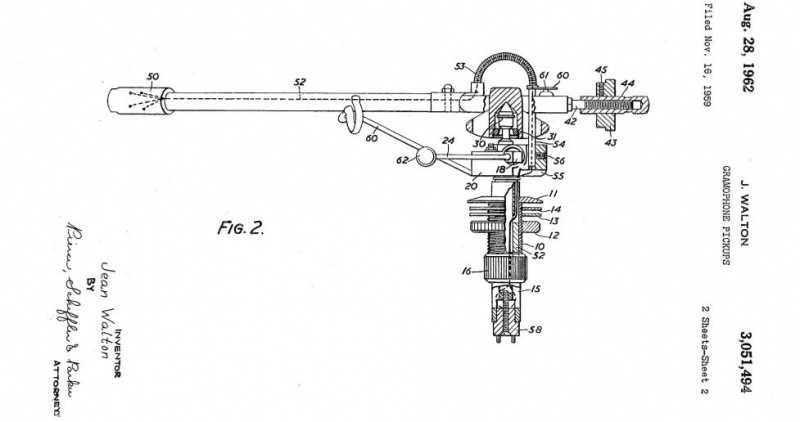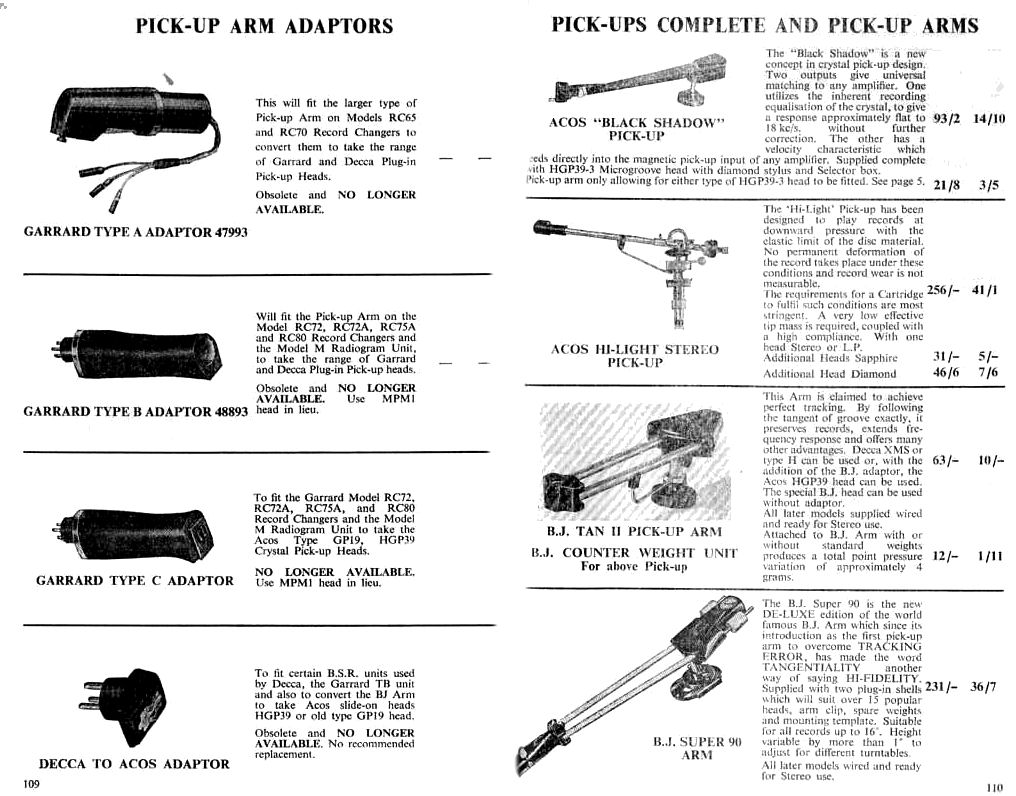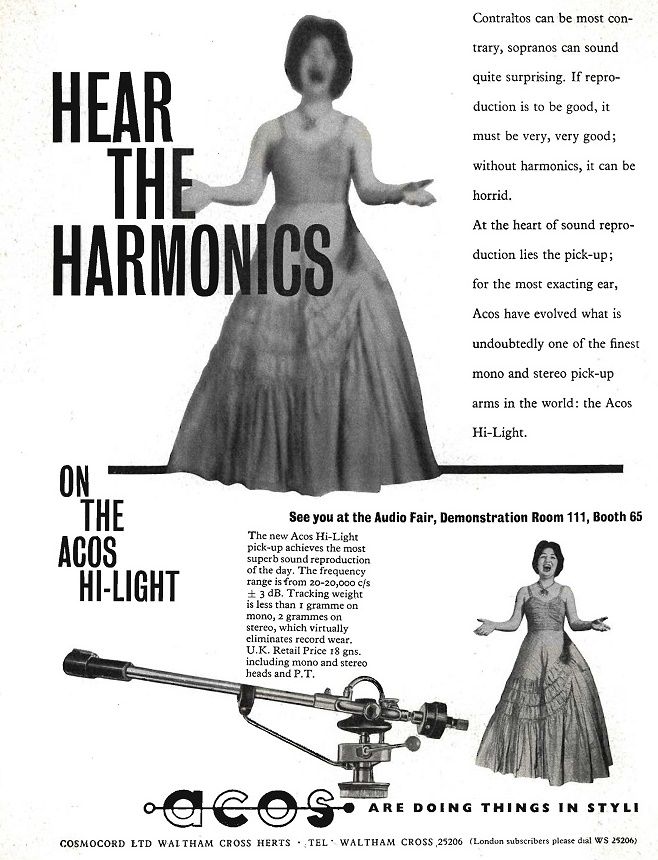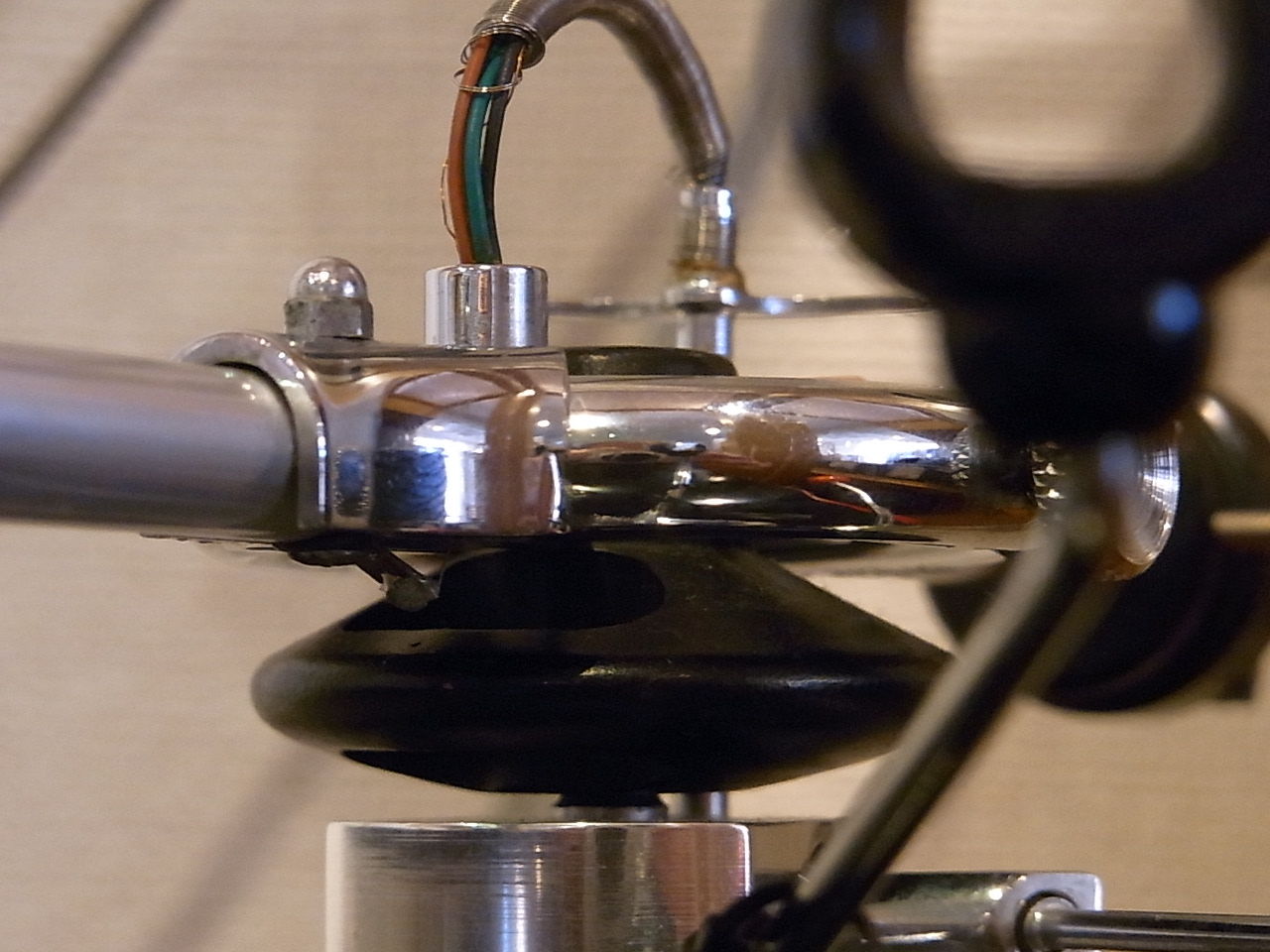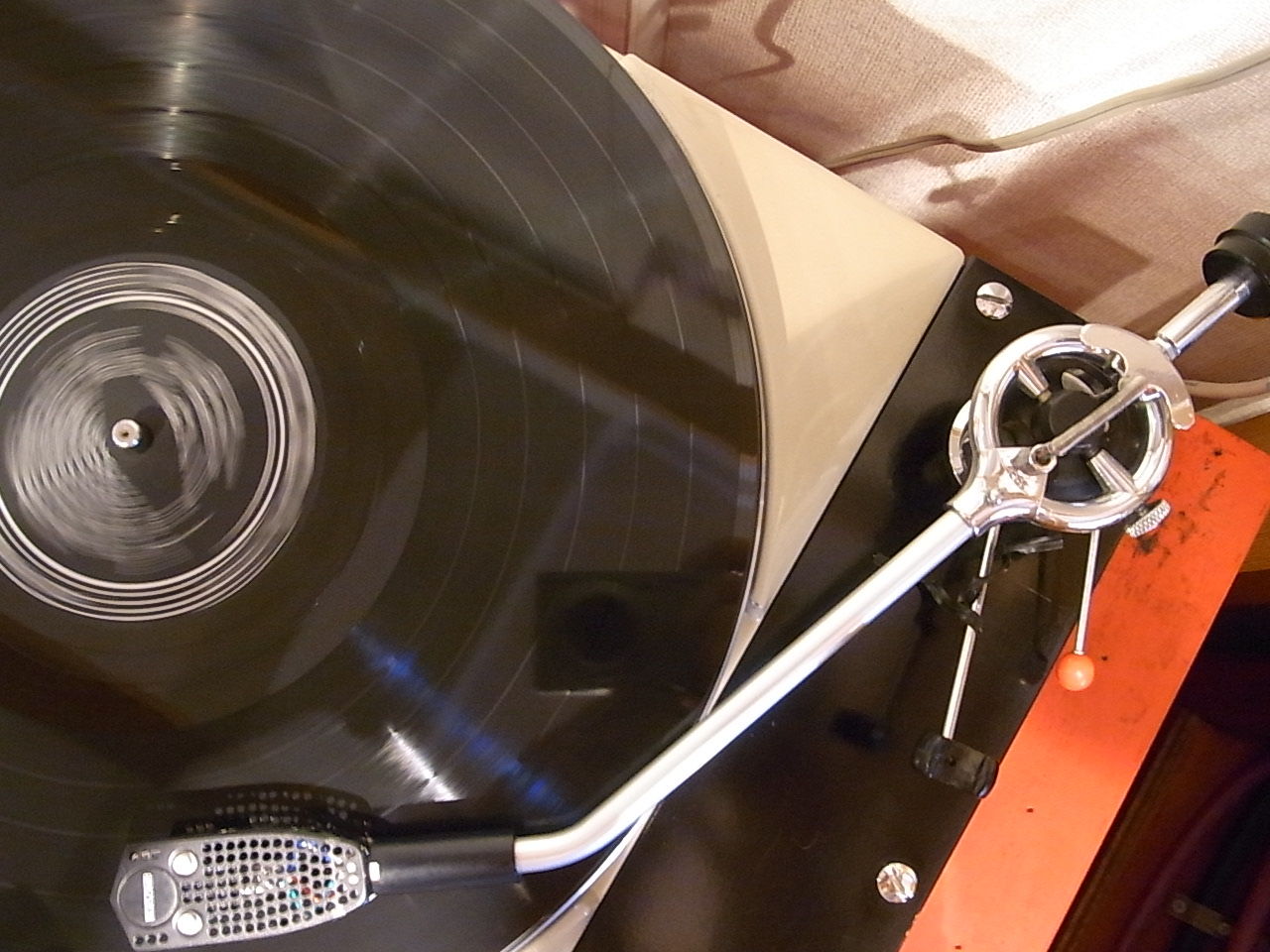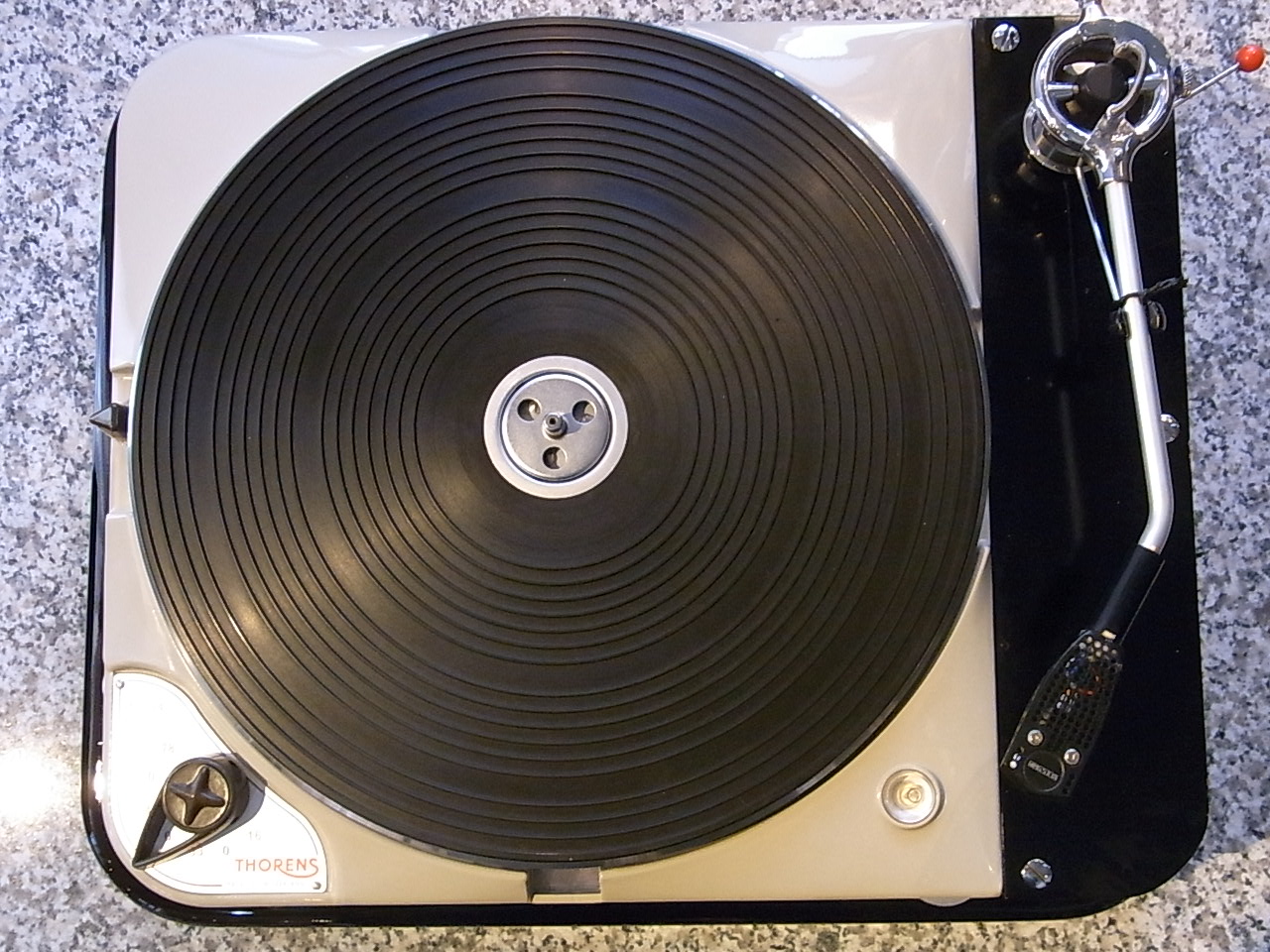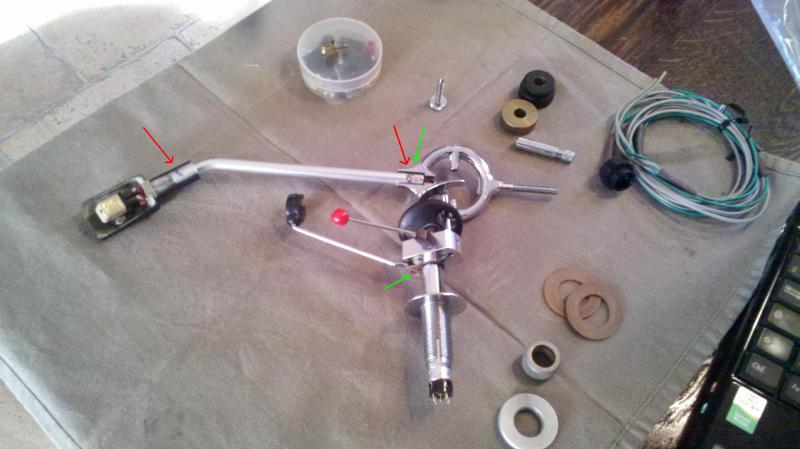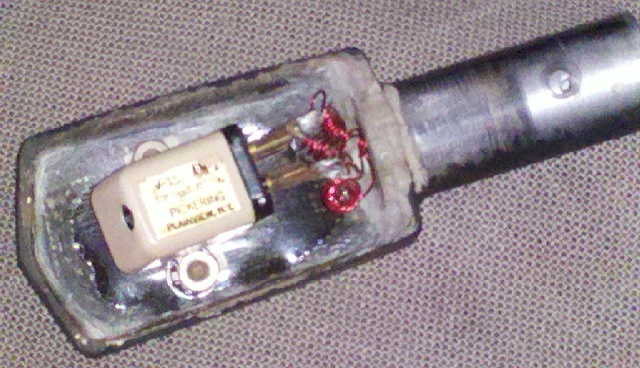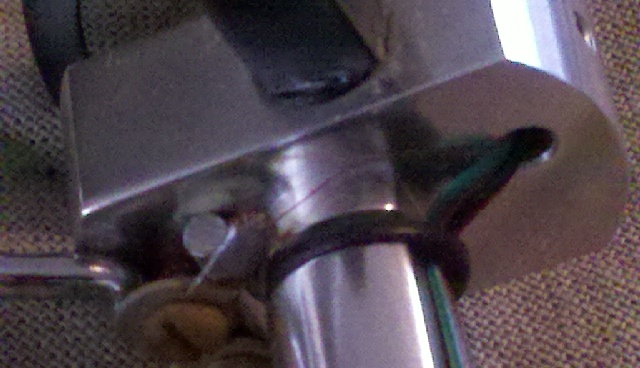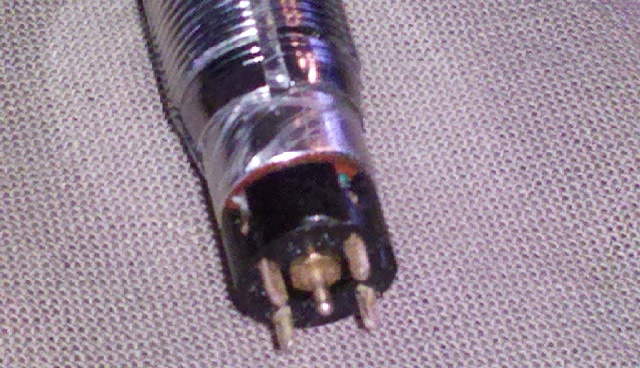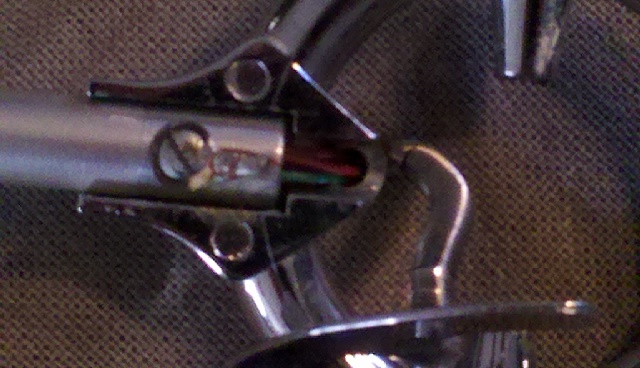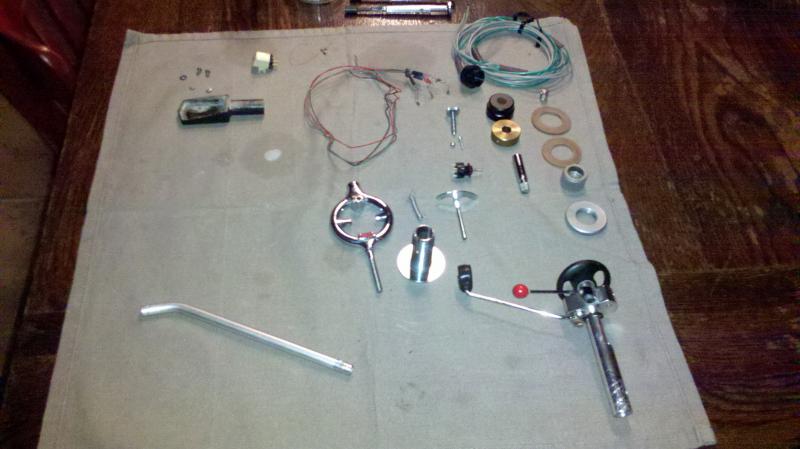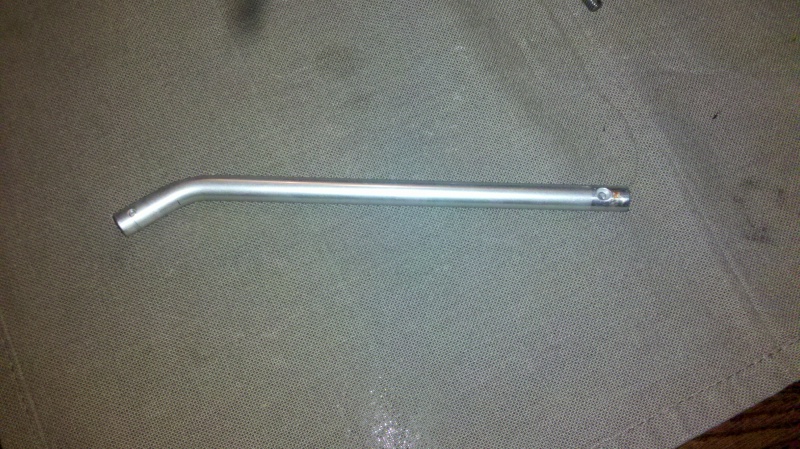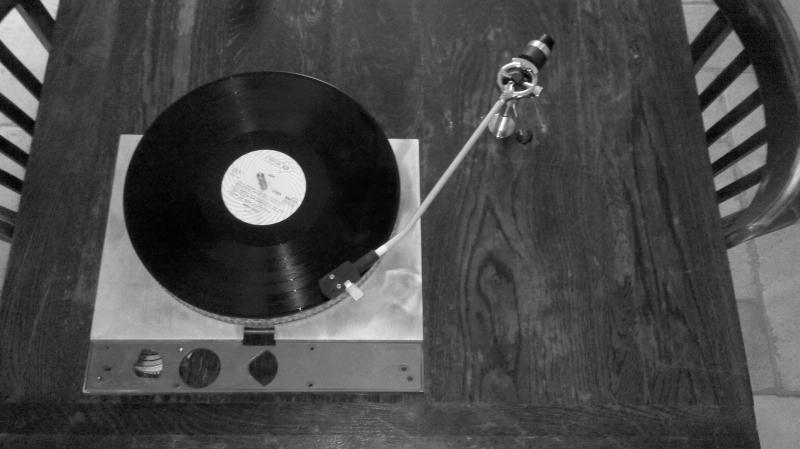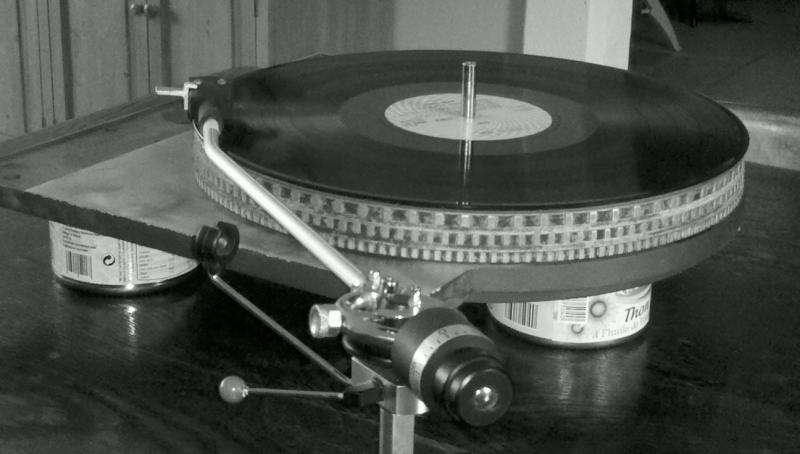Temps de requête : 0.74 ms Mémoire de requête : 0.015 MB mémoire avant requête : 2.499 MB Rangées retournées : 0
SELECT `data`
FROM `joom_session`
WHERE `session_id` = 'ph0cpurnnm1bmitpisgvrarb26'
EXPLAIN impossible sur la requête : SELECT `data`
FROM `joom_session`
WHERE `session_id` = 'ph0cpurnnm1bmitpisgvrarb26'
No SHOW PROFILE (peut-être parce qu'il y a plus de 100 requêtes)
JROOT/libraries/joomla/session/storage/database.php:44
JROOT/libraries/joomla/session/session.php:665
JROOT/libraries/joomla/session/session.php:603
JROOT/libraries/cms/application/cms.php:739
JROOT/libraries/cms/application/cms.php:131
JROOT/libraries/cms/application/site.php:63
JROOT/libraries/cms/application/cms.php:399
JROOT/libraries/joomla/factory.php:125
JROOT/index.php:42
Temps de requête : 0.57 ms Après la dernière requête : 1.44 ms Mémoire de requête : 0.012 MB mémoire avant requête : 2.688 MB Rangées retournées : 0
SELECT `session_id`
FROM `joom_session`
WHERE `session_id` = 'ph0cpurnnm1bmitpisgvrarb26'
LIMIT 0, 1
EXPLAIN impossible sur la requête : SELECT `session_id`
FROM `joom_session`
WHERE `session_id` = 'ph0cpurnnm1bmitpisgvrarb26' LIMIT 0, 1
No SHOW PROFILE (peut-être parce qu'il y a plus de 100 requêtes)
JROOT/libraries/cms/application/cms.php:176
JROOT/libraries/cms/application/cms.php:765
JROOT/libraries/cms/application/cms.php:131
JROOT/libraries/cms/application/site.php:63
JROOT/libraries/cms/application/cms.php:399
JROOT/libraries/joomla/factory.php:125
JROOT/index.php:42
Temps de requête : 7.59 ms Après la dernière requête : 0.09 ms Mémoire de requête : 0.009 MB mémoire avant requête : 2.701 MB
INSERT INTO `joom_session`
(`session_id`, `client_id`, `time`)
VALUES
('ph0cpurnnm1bmitpisgvrarb26', 0, '1745640642')
EXPLAIN impossible sur la requête : INSERT INTO `joom_session`
(`session_id`, `client_id`, `time`) VALUES
('ph0cpurnnm1bmitpisgvrarb26', 0, '1745640642')
No SHOW PROFILE (peut-être parce qu'il y a plus de 100 requêtes)
JROOT/libraries/cms/application/cms.php:208
JROOT/libraries/cms/application/cms.php:765
JROOT/libraries/cms/application/cms.php:131
JROOT/libraries/cms/application/site.php:63
JROOT/libraries/cms/application/cms.php:399
JROOT/libraries/joomla/factory.php:125
JROOT/index.php:42
Temps de requête : 0.88 ms Après la dernière requête : 2.64 ms Mémoire de requête : 0.024 MB mémoire avant requête : 3.069 MB Rangées retournées : 44
SELECT extension_id AS id, element AS "option", params, enabled
FROM joom_extensions
WHERE `type` = 'component'
EXPLAIN impossible sur la requête : SELECT extension_id AS id, element AS "option", params, enabled
FROM joom_extensions
WHERE `type` = 'component'
No SHOW PROFILE (peut-être parce qu'il y a plus de 100 requêtes)
JROOT/libraries/joomla/cache/controller/callback.php:157
JROOT/libraries/cms/component/helper.php:435
JROOT/libraries/cms/component/helper.php:43
JROOT/libraries/cms/component/helper.php:120
JROOT/libraries/cms/application/site.php:584
JROOT/libraries/cms/application/site.php:209
JROOT/libraries/cms/application/cms.php:252
JROOT/index.php:45
Temps de requête : 0.17 ms Après la dernière requête : 1.12 ms Mémoire de requête : 0.014 MB mémoire avant requête : 3.240 MB Rangées retournées : 1
SELECT b.id
FROM joom_usergroups AS a
LEFT JOIN joom_usergroups AS b
ON b.lft <= a.lft
AND b.rgt >= a.rgt
WHERE a.id = 1
EXPLAIN impossible sur la requête : SELECT b.id
FROM joom_usergroups AS a
LEFT JOIN joom_usergroups AS b ON b.lft <= a.lft AND b.rgt >= a.rgt
WHERE a.id = 1
No SHOW PROFILE (peut-être parce qu'il y a plus de 100 requêtes)
JROOT/libraries/joomla/access/access.php:332
JROOT/libraries/joomla/access/access.php:401
JROOT/libraries/joomla/user/user.php:453
JROOT/libraries/cms/plugin/helper.php:296
JROOT/libraries/cms/plugin/helper.php:163
JROOT/libraries/cms/application/site.php:589
JROOT/libraries/cms/application/site.php:209
JROOT/libraries/cms/application/cms.php:252
JROOT/index.php:45
Temps de requête : 0.14 ms Après la dernière requête : 0.40 ms Mémoire de requête : 0.013 MB mémoire avant requête : 3.296 MB Rangées retournées : 12
SELECT id, rules
FROM `joom_viewlevels`
EXPLAIN impossible sur la requête : SELECT id, rules
FROM `joom_viewlevels`
No SHOW PROFILE (peut-être parce qu'il y a plus de 100 requêtes)
JROOT/libraries/joomla/access/access.php:418
JROOT/libraries/joomla/user/user.php:453
JROOT/libraries/cms/plugin/helper.php:296
JROOT/libraries/cms/plugin/helper.php:163
JROOT/libraries/cms/application/site.php:589
JROOT/libraries/cms/application/site.php:209
JROOT/libraries/cms/application/cms.php:252
JROOT/index.php:45
Temps de requête : 1.11 ms Après la dernière requête : 0.15 ms Mémoire de requête : 0.042 MB mémoire avant requête : 3.319 MB Rangées retournées : 74
SELECT folder AS type, element AS name, params
FROM joom_extensions
WHERE enabled = 1
AND type ='plugin'
AND state IN (0,1)
AND access IN (1,1)
ORDER BY ordering
EXPLAIN impossible sur la requête : SELECT folder AS type, element AS name, params
FROM joom_extensions
WHERE enabled = 1 AND type ='plugin' AND state IN (0,1) AND access IN (1,1)
ORDER BY ordering
No SHOW PROFILE (peut-être parce qu'il y a plus de 100 requêtes)
JROOT/libraries/cms/plugin/helper.php:310
JROOT/libraries/cms/plugin/helper.php:163
JROOT/libraries/cms/application/site.php:589
JROOT/libraries/cms/application/site.php:209
JROOT/libraries/cms/application/cms.php:252
JROOT/index.php:45
Temps de requête : 3.38 ms Après la dernière requête : 23.69 ms Mémoire de requête : 0.041 MB mémoire avant requête : 6.008 MB Rangées retournées : 44
SELECT m.id, m.menutype, m.title, m.alias, m.note, m.path AS route, m.link, m.type, m.level, m.language,`m`.`browserNav`, m.access, m.params, m.home, m.img, m.template_style_id, m.component_id, m.parent_id,e.element as component
FROM joom_menu AS m
LEFT JOIN joom_extensions AS e
ON m.component_id = e.extension_id
WHERE m.published = 1
AND m.parent_id > 0
AND m.client_id = 0
ORDER BY m.lft
EXPLAIN impossible sur la requête : SELECT m.id, m.menutype, m.title, m.alias, m.note, m.path AS route, m.link, m.type, m.level, m.language,`m`.`browserNav`, m.access, m.params, m.home, m.img, m.template_style_id, m.component_id, m.parent_id,e.element as component
FROM joom_menu AS m
LEFT JOIN joom_extensions AS e ON m.component_id = e.extension_id
WHERE m.published = 1 AND m.parent_id > 0 AND m.client_id = 0
ORDER BY m.lft
No SHOW PROFILE (peut-être parce qu'il y a plus de 100 requêtes)
JROOT/libraries/cms/menu/site.php:45
JROOT/libraries/cms/menu/menu.php:64
JROOT/libraries/cms/menu/menu.php:118
JROOT/libraries/cms/application/cms.php:424
JROOT/libraries/cms/application/site.php:272
JROOT/libraries/cms/application/site.php:438
JROOT/libraries/cms/html/html.php:334
JROOT/libraries/cms/html/html.php:680
JROOT/libraries/cms/html/html.php:236
JROOT/libraries/cms/html/html.php:138
JROOT/libraries/cms/html/behavior.php:61
JROOT/libraries/cms/html/html.php:236
JROOT/libraries/cms/html/html.php:138
JROOT/plugins/system/jckmodal/jckmodal.php:29
JROOT/libraries/joomla/event/event.php:69
JROOT/libraries/joomla/event/dispatcher.php:160
JROOT/libraries/joomla/application/base.php:106
JROOT/libraries/cms/application/cms.php:654
JROOT/libraries/cms/application/site.php:663
JROOT/libraries/cms/application/site.php:209
JROOT/libraries/cms/application/cms.php:252
JROOT/index.php:45
Temps de requête : 0.23 ms Après la dernière requête : 3.17 ms Mémoire de requête : 0.026 MB mémoire avant requête : 6.618 MB Rangées retournées : 12
SELECT id, home, template, s.params
FROM joom_template_styles as s
LEFT JOIN joom_extensions as e
ON e.element=s.template
AND e.type='template'
AND e.client_id=s.client_id
WHERE s.client_id = 0
AND e.enabled = 1
EXPLAIN impossible sur la requête : SELECT id, home, template, s.params
FROM joom_template_styles as s
LEFT JOIN joom_extensions as e ON e.element=s.template AND e.type='template' AND e.client_id=s.client_id
WHERE s.client_id = 0 AND e.enabled = 1
No SHOW PROFILE (peut-être parce qu'il y a plus de 100 requêtes)
JROOT/libraries/cms/application/site.php:484
JROOT/libraries/cms/html/html.php:334
JROOT/libraries/cms/html/html.php:680
JROOT/libraries/cms/html/html.php:236
JROOT/libraries/cms/html/html.php:138
JROOT/libraries/cms/html/behavior.php:61
JROOT/libraries/cms/html/html.php:236
JROOT/libraries/cms/html/html.php:138
JROOT/plugins/system/jckmodal/jckmodal.php:29
JROOT/libraries/joomla/event/event.php:69
JROOT/libraries/joomla/event/dispatcher.php:160
JROOT/libraries/joomla/application/base.php:106
JROOT/libraries/cms/application/cms.php:654
JROOT/libraries/cms/application/site.php:663
JROOT/libraries/cms/application/site.php:209
JROOT/libraries/cms/application/cms.php:252
JROOT/index.php:45
Temps de requête : 0.60 ms Après la dernière requête : 3.94 ms Mémoire de requête : 0.032 MB mémoire avant requête : 6.815 MB Rangées retournées : 1
SELECT extension_id AS id, element AS "option", params, enabled
FROM joom_extensions
WHERE `type` = 'library'
AND `element` = 'joomla'
EXPLAIN impossible sur la requête : SELECT extension_id AS id, element AS "option", params, enabled
FROM joom_extensions
WHERE `type` = 'library' AND `element` = 'joomla'
No SHOW PROFILE (peut-être parce qu'il y a plus de 100 requêtes)
JROOT/libraries/joomla/cache/controller/callback.php:157
JROOT/libraries/cms/library/helper.php:156
JROOT/libraries/cms/library/helper.php:47
JROOT/libraries/cms/library/helper.php:90
JROOT/libraries/cms/version/version.php:189
JROOT/libraries/joomla/factory.php:736
JROOT/libraries/joomla/factory.php:216
JROOT/libraries/cms/html/html.php:701
JROOT/libraries/cms/html/html.php:236
JROOT/libraries/cms/html/html.php:138
JROOT/libraries/cms/html/behavior.php:61
JROOT/libraries/cms/html/html.php:236
JROOT/libraries/cms/html/html.php:138
JROOT/plugins/system/jckmodal/jckmodal.php:29
JROOT/libraries/joomla/event/event.php:69
JROOT/libraries/joomla/event/dispatcher.php:160
JROOT/libraries/joomla/application/base.php:106
JROOT/libraries/cms/application/cms.php:654
JROOT/libraries/cms/application/site.php:663
JROOT/libraries/cms/application/site.php:209
JROOT/libraries/cms/application/cms.php:252
JROOT/index.php:45
Temps de requête : 6.95 ms Après la dernière requête : 0.19 ms Mémoire de requête : 0.026 MB mémoire avant requête : 6.831 MB
UPDATE `joom_extensions`
SET `params` = '{\"mediaversion\":\"2a20ef335c176ec404cfbd9bd305a221\"}'
WHERE `type` = 'library'
AND `element` = 'joomla'
EXPLAIN impossible sur la requête : UPDATE `joom_extensions`
SET `params` = '{\"mediaversion\":\"2a20ef335c176ec404cfbd9bd305a221\"}'
WHERE `type` = 'library' AND `element` = 'joomla'
No SHOW PROFILE (peut-être parce qu'il y a plus de 100 requêtes)
JROOT/libraries/cms/library/helper.php:119
JROOT/libraries/cms/version/version.php:240
JROOT/libraries/cms/version/version.php:199
JROOT/libraries/joomla/factory.php:736
JROOT/libraries/joomla/factory.php:216
JROOT/libraries/cms/html/html.php:701
JROOT/libraries/cms/html/html.php:236
JROOT/libraries/cms/html/html.php:138
JROOT/libraries/cms/html/behavior.php:61
JROOT/libraries/cms/html/html.php:236
JROOT/libraries/cms/html/html.php:138
JROOT/plugins/system/jckmodal/jckmodal.php:29
JROOT/libraries/joomla/event/event.php:69
JROOT/libraries/joomla/event/dispatcher.php:160
JROOT/libraries/joomla/application/base.php:106
JROOT/libraries/cms/application/cms.php:654
JROOT/libraries/cms/application/site.php:663
JROOT/libraries/cms/application/site.php:209
JROOT/libraries/cms/application/cms.php:252
JROOT/index.php:45
Temps de requête : 1.58 ms Après la dernière requête : 10.32 ms Mémoire de requête : 0.025 MB mémoire avant requête : 8.062 MB Rangées retournées : 1
SELECT *
FROM joom_kunena_configuration
WHERE id=1
EXPLAIN impossible sur la requête : SELECT * FROM joom_kunena_configuration WHERE id=1
No SHOW PROFILE (peut-être parce qu'il y a plus de 100 requêtes)
JROOT/libraries/kunena/config.php:1227
JROOT/libraries/kunena/config.php:1174
JROOT/libraries/kunena/factory.php:28
JROOT/libraries/kunena/route/route.php:429
JROOT/libraries/kunena/route/route.php:17
JROOT/libraries/loader.php:601
JROOT/libraries/loader.php:568
JROOT/components/com_kunena/router.php:275
JROOT/libraries/cms/component/router/legacy.php:104
JROOT/libraries/cms/router/site.php:395
JROOT/libraries/cms/router/router.php:479
JROOT/libraries/cms/router/router.php:234
JROOT/libraries/cms/router/site.php:118
JROOT/libraries/cms/application/cms.php:1089
JROOT/libraries/cms/application/site.php:763
JROOT/libraries/cms/application/site.php:215
JROOT/libraries/cms/application/cms.php:252
JROOT/index.php:45
Temps de requête : 0.70 ms Après la dernière requête : 5.59 ms Mémoire de requête : 0.018 MB mémoire avant requête : 8.814 MB Rangées retournées : 2
SELECT *
FROM joom_kunena_aliases
WHERE alias LIKE 'les-bras-de-lecture%'
EXPLAIN impossible sur la requête : SELECT * FROM joom_kunena_aliases WHERE alias LIKE 'les-bras-de-lecture%'
No SHOW PROFILE (peut-être parce qu'il y a plus de 100 requêtes)
JROOT/libraries/kunena/route/route.php:403
JROOT/components/com_kunena/router.php:290
JROOT/libraries/cms/component/router/legacy.php:104
JROOT/libraries/cms/router/site.php:395
JROOT/libraries/cms/router/router.php:479
JROOT/libraries/cms/router/router.php:234
JROOT/libraries/cms/router/site.php:118
JROOT/libraries/cms/application/cms.php:1089
JROOT/libraries/cms/application/site.php:763
JROOT/libraries/cms/application/site.php:215
JROOT/libraries/cms/application/cms.php:252
JROOT/index.php:45
Temps de requête : 2.40 ms Après la dernière requête : 6.12 ms Mémoire de requête : 0.017 MB mémoire avant requête : 9.645 MB Rangées retournées : 1
SELECT a.rules
FROM joom_assets AS a
WHERE (a.id = 1)
GROUP BY a.id, a.rules, a.lft
EXPLAIN impossible sur la requête : SELECT a.rules
FROM joom_assets AS a
WHERE (a.id = 1)
GROUP BY a.id, a.rules, a.lft
No SHOW PROFILE (peut-être parce qu'il y a plus de 100 requêtes)
JROOT/libraries/joomla/access/access.php:246
JROOT/libraries/joomla/user/user.php:384
JROOT/plugins/system/jqueryeasy/jqueryeasy.php:73
JROOT/libraries/joomla/event/event.php:69
JROOT/libraries/joomla/event/dispatcher.php:160
JROOT/libraries/joomla/application/base.php:106
JROOT/libraries/cms/application/cms.php:1098
JROOT/libraries/cms/application/site.php:763
JROOT/libraries/cms/application/site.php:215
JROOT/libraries/cms/application/cms.php:252
JROOT/index.php:45
Temps de requête : 1.01 ms Après la dernière requête : 2.01 ms Mémoire de requête : 0.025 MB mémoire avant requête : 9.994 MB Rangées retournées : 8
SHOW FULL COLUMNS
FROM `joom_assets`
EXPLAIN impossible sur la requête : SHOW FULL COLUMNS FROM `joom_assets`
No SHOW PROFILE (peut-être parce qu'il y a plus de 100 requêtes)
JROOT/libraries/joomla/table/table.php:241
JROOT/libraries/joomla/table/table.php:162
JROOT/libraries/joomla/table/asset.php:61
JROOT/libraries/joomla/table/table.php:305
JROOT/libraries/joomla/access/access.php:100
JROOT/libraries/joomla/user/user.php:393
JROOT/plugins/system/jqueryeasy/jqueryeasy.php:73
JROOT/libraries/joomla/event/event.php:69
JROOT/libraries/joomla/event/dispatcher.php:160
JROOT/libraries/joomla/application/base.php:106
JROOT/libraries/cms/application/cms.php:1098
JROOT/libraries/cms/application/site.php:763
JROOT/libraries/cms/application/site.php:215
JROOT/libraries/cms/application/cms.php:252
JROOT/index.php:45
Temps de requête : 0.14 ms Après la dernière requête : 0.50 ms Mémoire de requête : 0.018 MB mémoire avant requête : 10.056 MB Rangées retournées : 1
SELECT id
FROM joom_assets
WHERE parent_id = 0
EXPLAIN impossible sur la requête : SELECT id
FROM joom_assets
WHERE parent_id = 0
No SHOW PROFILE (peut-être parce qu'il y a plus de 100 requêtes)
JROOT/libraries/joomla/table/nested.php:1226
JROOT/libraries/joomla/access/access.php:101
JROOT/libraries/joomla/user/user.php:393
JROOT/plugins/system/jqueryeasy/jqueryeasy.php:73
JROOT/libraries/joomla/event/event.php:69
JROOT/libraries/joomla/event/dispatcher.php:160
JROOT/libraries/joomla/application/base.php:106
JROOT/libraries/cms/application/cms.php:1098
JROOT/libraries/cms/application/site.php:763
JROOT/libraries/cms/application/site.php:215
JROOT/libraries/cms/application/cms.php:252
JROOT/index.php:45
Temps de requête : 0.14 ms Après la dernière requête : 0.09 ms Mémoire de requête : 0.018 MB mémoire avant requête : 10.076 MB Rangées retournées : 1
SELECT b.rules
FROM joom_assets AS a
LEFT JOIN joom_assets AS b
ON b.lft <= a.lft
AND b.rgt >= a.rgt
WHERE (a.id = 1)
GROUP BY b.id, b.rules, b.lft
ORDER BY b.lft
EXPLAIN impossible sur la requête : SELECT b.rules
FROM joom_assets AS a
LEFT JOIN joom_assets AS b ON b.lft <= a.lft AND b.rgt >= a.rgt
WHERE (a.id = 1)
GROUP BY b.id, b.rules, b.lft
ORDER BY b.lft
No SHOW PROFILE (peut-être parce qu'il y a plus de 100 requêtes)
JROOT/libraries/joomla/access/access.php:246
JROOT/libraries/joomla/access/access.php:107
JROOT/libraries/joomla/user/user.php:393
JROOT/plugins/system/jqueryeasy/jqueryeasy.php:73
JROOT/libraries/joomla/event/event.php:69
JROOT/libraries/joomla/event/dispatcher.php:160
JROOT/libraries/joomla/application/base.php:106
JROOT/libraries/cms/application/cms.php:1098
JROOT/libraries/cms/application/site.php:763
JROOT/libraries/cms/application/site.php:215
JROOT/libraries/cms/application/cms.php:252
JROOT/index.php:45
Temps de requête : 0.72 ms Après la dernière requête : 0.19 ms Mémoire de requête : 0.015 MB mémoire avant requête : 10.099 MB Rangées retournées : 1
SELECT params
FROM joom_extensions
WHERE folder ='editors'
AND element ='jckeditor'
EXPLAIN impossible sur la requête : SELECT params
FROM joom_extensions
WHERE folder ='editors' AND element ='jckeditor'
No SHOW PROFILE (peut-être parce qu'il y a plus de 100 requêtes)
JROOT/plugins/system/jcktypography/jcktypography.php:61
JROOT/libraries/joomla/event/event.php:69
JROOT/libraries/joomla/event/dispatcher.php:160
JROOT/libraries/joomla/application/base.php:106
JROOT/libraries/cms/application/cms.php:1098
JROOT/libraries/cms/application/site.php:763
JROOT/libraries/cms/application/site.php:215
JROOT/libraries/cms/application/cms.php:252
JROOT/index.php:45
Temps de requête : 0.18 ms Après la dernière requête : 2.03 ms Mémoire de requête : 0.057 MB mémoire avant requête : 10.339 MB Rangées retournées : 71
SELECT *
FROM joom_kunena_categories
ORDER BY ordering, name
EXPLAIN impossible sur la requête : SELECT * FROM joom_kunena_categories ORDER BY ordering, name
No SHOW PROFILE (peut-être parce qu'il y a plus de 100 requêtes)
JROOT/libraries/kunena/forum/category/helper.php:805
JROOT/libraries/kunena/forum/category/helper.php:42
JROOT/libraries/kunena/forum/category/helper.php:892
JROOT/libraries/loader.php:601
JROOT/libraries/loader.php:568
JROOT/components/com_kunena/router.php:107
JROOT/libraries/cms/component/router/legacy.php:68
JROOT/libraries/cms/router/site.php:483
JROOT/libraries/cms/router/site.php:452
JROOT/libraries/cms/router/router.php:280
JROOT/libraries/cms/router/site.php:134
JROOT/libraries/joomla/application/route.php:62
JROOT/plugins/system/sef/sef.php:46
JROOT/libraries/joomla/event/event.php:69
JROOT/libraries/joomla/event/dispatcher.php:160
JROOT/libraries/joomla/application/base.php:106
JROOT/libraries/cms/application/cms.php:1098
JROOT/libraries/cms/application/site.php:763
JROOT/libraries/cms/application/site.php:215
JROOT/libraries/cms/application/cms.php:252
JROOT/index.php:45
Temps de requête : 1.37 ms Après la dernière requête : 7.64 ms Mémoire de requête : 0.051 MB mémoire avant requête : 12.129 MB Rangées retournées : 42
SHOW FULL COLUMNS
FROM `joom_kunena_users`
EXPLAIN impossible sur la requête : SHOW FULL COLUMNS FROM `joom_kunena_users`
No SHOW PROFILE (peut-être parce qu'il y a plus de 100 requêtes)
JROOT/libraries/joomla/table/table.php:241
JROOT/libraries/joomla/table/table.php:162
JROOT/libraries/kunena/tables/kunenausers.php:278
JROOT/libraries/joomla/table/table.php:305
JROOT/libraries/kunena/user/user.php:246
JROOT/libraries/kunena/user/user.php:269
JROOT/libraries/kunena/user/user.php:92
JROOT/libraries/kunena/user/helper.php:46
JROOT/libraries/kunena/user/helper.php:13
JROOT/libraries/loader.php:601
JROOT/libraries/loader.php:568
JROOT/libraries/kunena/access.php:103
JROOT/libraries/kunena/access.php:75
JROOT/libraries/kunena/access.php:87
JROOT/libraries/kunena/forum/category/helper.php:50
JROOT/libraries/kunena/forum/category/helper.php:892
JROOT/libraries/loader.php:601
JROOT/libraries/loader.php:568
JROOT/components/com_kunena/router.php:107
JROOT/libraries/cms/component/router/legacy.php:68
JROOT/libraries/cms/router/site.php:483
JROOT/libraries/cms/router/site.php:452
JROOT/libraries/cms/router/router.php:280
JROOT/libraries/cms/router/site.php:134
JROOT/libraries/joomla/application/route.php:62
JROOT/plugins/system/sef/sef.php:46
JROOT/libraries/joomla/event/event.php:69
JROOT/libraries/joomla/event/dispatcher.php:160
JROOT/libraries/joomla/application/base.php:106
JROOT/libraries/cms/application/cms.php:1098
JROOT/libraries/cms/application/site.php:763
JROOT/libraries/cms/application/site.php:215
JROOT/libraries/cms/application/cms.php:252
JROOT/index.php:45
Temps de requête : 0.18 ms Après la dernière requête : 0.82 ms Mémoire de requête : 0.035 MB mémoire avant requête : 12.301 MB Rangées retournées : 2
SELECT b.rules
FROM joom_assets AS a
LEFT JOIN joom_assets AS b
ON b.lft <= a.lft
AND b.rgt >= a.rgt
WHERE (a.name = 'com_kunena')
GROUP BY b.id, b.rules, b.lft
ORDER BY b.lft
EXPLAIN impossible sur la requête : SELECT b.rules
FROM joom_assets AS a
LEFT JOIN joom_assets AS b ON b.lft <= a.lft AND b.rgt >= a.rgt
WHERE (a.name = 'com_kunena')
GROUP BY b.id, b.rules, b.lft
ORDER BY b.lft
No SHOW PROFILE (peut-être parce qu'il y a plus de 100 requêtes)
JROOT/libraries/joomla/access/access.php:246
JROOT/plugins/kunena/joomla/access.php:454
JROOT/plugins/kunena/joomla/access.php:229
JROOT/libraries/kunena/access.php:111
JROOT/libraries/kunena/access.php:75
JROOT/libraries/kunena/access.php:87
JROOT/libraries/kunena/forum/category/helper.php:50
JROOT/libraries/kunena/forum/category/helper.php:892
JROOT/libraries/loader.php:601
JROOT/libraries/loader.php:568
JROOT/components/com_kunena/router.php:107
JROOT/libraries/cms/component/router/legacy.php:68
JROOT/libraries/cms/router/site.php:483
JROOT/libraries/cms/router/site.php:452
JROOT/libraries/cms/router/router.php:280
JROOT/libraries/cms/router/site.php:134
JROOT/libraries/joomla/application/route.php:62
JROOT/plugins/system/sef/sef.php:46
JROOT/libraries/joomla/event/event.php:69
JROOT/libraries/joomla/event/dispatcher.php:160
JROOT/libraries/joomla/application/base.php:106
JROOT/libraries/cms/application/cms.php:1098
JROOT/libraries/cms/application/site.php:763
JROOT/libraries/cms/application/site.php:215
JROOT/libraries/cms/application/cms.php:252
JROOT/index.php:45
Temps de requête : 0.16 ms Après la dernière requête : 0.16 ms Mémoire de requête : 0.035 MB mémoire avant requête : 12.344 MB Rangées retournées : 3
SELECT DISTINCT(user_id)
FROM joom_usergroups as ug1
INNER JOIN joom_usergroups AS ug2
ON ug2.lft>=ug1.lft
AND ug1.rgt>=ug2.rgt
INNER JOIN joom_user_usergroup_map AS m
ON ug2.id=m.group_id
WHERE ug1.id IN (8,15,12)
EXPLAIN impossible sur la requête : SELECT DISTINCT(user_id)
FROM joom_usergroups as ug1
INNER JOIN joom_usergroups AS ug2 ON ug2.lft>=ug1.lft AND ug1.rgt>=ug2.rgt
INNER JOIN joom_user_usergroup_map AS m ON ug2.id=m.group_id
WHERE ug1.id IN (8,15,12)
No SHOW PROFILE (peut-être parce qu'il y a plus de 100 requêtes)
JROOT/plugins/kunena/joomla/access.php:435
JROOT/plugins/kunena/joomla/access.php:485
JROOT/plugins/kunena/joomla/access.php:229
JROOT/libraries/kunena/access.php:111
JROOT/libraries/kunena/access.php:75
JROOT/libraries/kunena/access.php:87
JROOT/libraries/kunena/forum/category/helper.php:50
JROOT/libraries/kunena/forum/category/helper.php:892
JROOT/libraries/loader.php:601
JROOT/libraries/loader.php:568
JROOT/components/com_kunena/router.php:107
JROOT/libraries/cms/component/router/legacy.php:68
JROOT/libraries/cms/router/site.php:483
JROOT/libraries/cms/router/site.php:452
JROOT/libraries/cms/router/router.php:280
JROOT/libraries/cms/router/site.php:134
JROOT/libraries/joomla/application/route.php:62
JROOT/plugins/system/sef/sef.php:46
JROOT/libraries/joomla/event/event.php:69
JROOT/libraries/joomla/event/dispatcher.php:160
JROOT/libraries/joomla/application/base.php:106
JROOT/libraries/cms/application/cms.php:1098
JROOT/libraries/cms/application/site.php:763
JROOT/libraries/cms/application/site.php:215
JROOT/libraries/cms/application/cms.php:252
JROOT/index.php:45
Temps de requête : 0.14 ms Après la dernière requête : 0.12 ms Mémoire de requête : 0.035 MB mémoire avant requête : 12.370 MB Rangées retournées : 2
SELECT b.rules
FROM joom_assets AS a
LEFT JOIN joom_assets AS b
ON b.lft <= a.lft
AND b.rgt >= a.rgt
WHERE (a.name = 'com_kunena')
GROUP BY b.id, b.rules, b.lft
ORDER BY b.lft
EXPLAIN impossible sur la requête : SELECT b.rules
FROM joom_assets AS a
LEFT JOIN joom_assets AS b ON b.lft <= a.lft AND b.rgt >= a.rgt
WHERE (a.name = 'com_kunena')
GROUP BY b.id, b.rules, b.lft
ORDER BY b.lft
No SHOW PROFILE (peut-être parce qu'il y a plus de 100 requêtes)
JROOT/libraries/joomla/access/access.php:246
JROOT/plugins/kunena/joomla/access.php:454
JROOT/plugins/kunena/joomla/access.php:229
JROOT/libraries/kunena/access.php:111
JROOT/libraries/kunena/access.php:75
JROOT/libraries/kunena/access.php:87
JROOT/libraries/kunena/forum/category/helper.php:50
JROOT/libraries/kunena/forum/category/helper.php:892
JROOT/libraries/loader.php:601
JROOT/libraries/loader.php:568
JROOT/components/com_kunena/router.php:107
JROOT/libraries/cms/component/router/legacy.php:68
JROOT/libraries/cms/router/site.php:483
JROOT/libraries/cms/router/site.php:452
JROOT/libraries/cms/router/router.php:280
JROOT/libraries/cms/router/site.php:134
JROOT/libraries/joomla/application/route.php:62
JROOT/plugins/system/sef/sef.php:46
JROOT/libraries/joomla/event/event.php:69
JROOT/libraries/joomla/event/dispatcher.php:160
JROOT/libraries/joomla/application/base.php:106
JROOT/libraries/cms/application/cms.php:1098
JROOT/libraries/cms/application/site.php:763
JROOT/libraries/cms/application/site.php:215
JROOT/libraries/cms/application/cms.php:252
JROOT/index.php:45
Temps de requête : 0.17 ms Après la dernière requête : 0.13 ms Mémoire de requête : 0.035 MB mémoire avant requête : 12.412 MB Rangées retournées : 2
SELECT DISTINCT(user_id)
FROM joom_usergroups as ug1
INNER JOIN joom_usergroups AS ug2
ON ug2.lft>=ug1.lft
AND ug1.rgt>=ug2.rgt
INNER JOIN joom_user_usergroup_map AS m
ON ug2.id=m.group_id
WHERE ug1.id IN (15,12)
EXPLAIN impossible sur la requête : SELECT DISTINCT(user_id)
FROM joom_usergroups as ug1
INNER JOIN joom_usergroups AS ug2 ON ug2.lft>=ug1.lft AND ug1.rgt>=ug2.rgt
INNER JOIN joom_user_usergroup_map AS m ON ug2.id=m.group_id
WHERE ug1.id IN (15,12)
No SHOW PROFILE (peut-être parce qu'il y a plus de 100 requêtes)
JROOT/plugins/kunena/joomla/access.php:435
JROOT/plugins/kunena/joomla/access.php:485
JROOT/plugins/kunena/joomla/access.php:229
JROOT/libraries/kunena/access.php:111
JROOT/libraries/kunena/access.php:75
JROOT/libraries/kunena/access.php:87
JROOT/libraries/kunena/forum/category/helper.php:50
JROOT/libraries/kunena/forum/category/helper.php:892
JROOT/libraries/loader.php:601
JROOT/libraries/loader.php:568
JROOT/components/com_kunena/router.php:107
JROOT/libraries/cms/component/router/legacy.php:68
JROOT/libraries/cms/router/site.php:483
JROOT/libraries/cms/router/site.php:452
JROOT/libraries/cms/router/router.php:280
JROOT/libraries/cms/router/site.php:134
JROOT/libraries/joomla/application/route.php:62
JROOT/plugins/system/sef/sef.php:46
JROOT/libraries/joomla/event/event.php:69
JROOT/libraries/joomla/event/dispatcher.php:160
JROOT/libraries/joomla/application/base.php:106
JROOT/libraries/cms/application/cms.php:1098
JROOT/libraries/cms/application/site.php:763
JROOT/libraries/cms/application/site.php:215
JROOT/libraries/cms/application/cms.php:252
JROOT/index.php:45
Temps de requête : 0.13 ms Après la dernière requête : 0.09 ms Mémoire de requête : 0.034 MB mémoire avant requête : 12.435 MB Rangées retournées : 55
SELECT user_id, category_id, role
FROM joom_kunena_user_categories
WHERE role IN (1,2)
EXPLAIN impossible sur la requête : SELECT user_id, category_id, role FROM joom_kunena_user_categories WHERE role IN (1,2)
No SHOW PROFILE (peut-être parce qu'il y a plus de 100 requêtes)
JROOT/libraries/kunena/access.php:119
JROOT/libraries/kunena/access.php:75
JROOT/libraries/kunena/access.php:87
JROOT/libraries/kunena/forum/category/helper.php:50
JROOT/libraries/kunena/forum/category/helper.php:892
JROOT/libraries/loader.php:601
JROOT/libraries/loader.php:568
JROOT/components/com_kunena/router.php:107
JROOT/libraries/cms/component/router/legacy.php:68
JROOT/libraries/cms/router/site.php:483
JROOT/libraries/cms/router/site.php:452
JROOT/libraries/cms/router/router.php:280
JROOT/libraries/cms/router/site.php:134
JROOT/libraries/joomla/application/route.php:62
JROOT/plugins/system/sef/sef.php:46
JROOT/libraries/joomla/event/event.php:69
JROOT/libraries/joomla/event/dispatcher.php:160
JROOT/libraries/joomla/application/base.php:106
JROOT/libraries/cms/application/cms.php:1098
JROOT/libraries/cms/application/site.php:763
JROOT/libraries/cms/application/site.php:215
JROOT/libraries/cms/application/cms.php:252
JROOT/index.php:45
Temps de requête : 1.02 ms Après la dernière requête : 2.93 ms Mémoire de requête : 0.039 MB mémoire avant requête : 12.945 MB Rangées retournées : 23
SHOW FULL COLUMNS
FROM `joom_kunena_topics`
EXPLAIN impossible sur la requête : SHOW FULL COLUMNS FROM `joom_kunena_topics`
No SHOW PROFILE (peut-être parce qu'il y a plus de 100 requêtes)
JROOT/libraries/joomla/table/table.php:241
JROOT/libraries/joomla/table/table.php:162
JROOT/libraries/kunena/tables/kunenatopics.php:47
JROOT/libraries/joomla/table/table.php:305
JROOT/libraries/kunena/database/object.php:282
JROOT/libraries/kunena/database/object.php:100
JROOT/libraries/kunena/forum/topic/topic.php:1005
JROOT/libraries/kunena/database/object.php:271
JROOT/libraries/kunena/forum/topic/topic.php:109
JROOT/libraries/kunena/forum/topic/helper.php:47
JROOT/components/com_kunena/router.php:134
JROOT/libraries/cms/component/router/legacy.php:68
JROOT/libraries/cms/router/site.php:483
JROOT/libraries/cms/router/site.php:452
JROOT/libraries/cms/router/router.php:280
JROOT/libraries/cms/router/site.php:134
JROOT/libraries/joomla/application/route.php:62
JROOT/plugins/system/sef/sef.php:46
JROOT/libraries/joomla/event/event.php:69
JROOT/libraries/joomla/event/dispatcher.php:160
JROOT/libraries/joomla/application/base.php:106
JROOT/libraries/cms/application/cms.php:1098
JROOT/libraries/cms/application/site.php:763
JROOT/libraries/cms/application/site.php:215
JROOT/libraries/cms/application/cms.php:252
JROOT/index.php:45
Temps de requête : 0.54 ms Après la dernière requête : 0.28 ms Mémoire de requête : 0.033 MB mémoire avant requête : 13.027 MB Rangées retournées : 1
SELECT *
FROM joom_kunena_topics
WHERE id = 1093
EXPLAIN impossible sur la requête : SELECT * FROM joom_kunena_topics WHERE id = 1093
No SHOW PROFILE (peut-être parce qu'il y a plus de 100 requêtes)
JROOT/libraries/kunena/tables/kunenatopics.php:74
JROOT/libraries/kunena/database/object.php:105
JROOT/libraries/kunena/forum/topic/topic.php:1005
JROOT/libraries/kunena/forum/topic/helper.php:49
JROOT/components/com_kunena/router.php:134
JROOT/libraries/cms/component/router/legacy.php:68
JROOT/libraries/cms/router/site.php:483
JROOT/libraries/cms/router/site.php:452
JROOT/libraries/cms/router/router.php:280
JROOT/libraries/cms/router/site.php:134
JROOT/libraries/joomla/application/route.php:62
JROOT/plugins/system/sef/sef.php:46
JROOT/libraries/joomla/event/event.php:69
JROOT/libraries/joomla/event/dispatcher.php:160
JROOT/libraries/joomla/application/base.php:106
JROOT/libraries/cms/application/cms.php:1098
JROOT/libraries/cms/application/site.php:763
JROOT/libraries/cms/application/site.php:215
JROOT/libraries/cms/application/cms.php:252
JROOT/index.php:45
Temps de requête : 0.14 ms Après la dernière requête : 1.08 ms Mémoire de requête : 0.014 MB mémoire avant requête : 13.132 MB Rangées retournées : 2
SELECT *
FROM joom_languages
WHERE published=1
ORDER BY ordering ASC
EXPLAIN impossible sur la requête : SELECT *
FROM joom_languages
WHERE published=1
ORDER BY ordering ASC
No SHOW PROFILE (peut-être parce qu'il y a plus de 100 requêtes)
JROOT/libraries/joomla/language/helper.php:164
JROOT/libraries/cms/application/site.php:329
JROOT/libraries/cms/application/site.php:135
JROOT/libraries/cms/application/site.php:230
JROOT/libraries/cms/application/cms.php:252
JROOT/index.php:45
Temps de requête : 0.81 ms Après la dernière requête : 3.58 ms Mémoire de requête : 0.026 MB mémoire avant requête : 13.445 MB Rangées retournées : 5
SHOW FULL COLUMNS
FROM `joom_kunena_sessions`
EXPLAIN impossible sur la requête : SHOW FULL COLUMNS FROM `joom_kunena_sessions`
No SHOW PROFILE (peut-être parce qu'il y a plus de 100 requêtes)
JROOT/libraries/joomla/table/table.php:241
JROOT/libraries/joomla/table/table.php:162
JROOT/libraries/kunena/tables/kunenasessions.php:31
JROOT/libraries/joomla/table/table.php:305
JROOT/libraries/kunena/session.php:85
JROOT/libraries/kunena/session.php:99
JROOT/libraries/kunena/session.php:25
JROOT/libraries/kunena/session.php:49
JROOT/libraries/kunena/factory.php:96
JROOT/components/com_kunena/kunena.php:61
JROOT/libraries/cms/component/helper.php:392
JROOT/libraries/cms/component/helper.php:372
JROOT/libraries/cms/application/site.php:191
JROOT/libraries/cms/application/site.php:230
JROOT/libraries/cms/application/cms.php:252
JROOT/index.php:45
Temps de requête : 3.19 ms Après la dernière requête : 24.19 ms Mémoire de requête : 0.030 MB mémoire avant requête : 16.541 MB Rangées retournées : 1
SELECT m.id, m.title, m.module, m.position, m.content, m.showtitle, m.params, mm.menuid
FROM joom_modules AS m
LEFT JOIN joom_modules_menu AS mm
ON mm.moduleid = m.id
LEFT JOIN joom_extensions AS e
ON e.element = m.module
AND e.client_id = m.client_id
WHERE m.published = 1
AND e.enabled = 1
AND (m.publish_up = '0000-00-00 00:00:00' OR m.publish_up <= '2025-04-26 04:10:43')
AND (m.publish_down = '0000-00-00 00:00:00' OR m.publish_down >= '2025-04-26 04:10:43')
AND m.access IN (1,1)
AND m.client_id = 0
AND (mm.menuid = 160 OR mm.menuid <= 0)
ORDER BY m.position, m.ordering
EXPLAIN impossible sur la requête : SELECT m.id, m.title, m.module, m.position, m.content, m.showtitle, m.params, mm.menuid
FROM joom_modules AS m
LEFT JOIN joom_modules_menu AS mm ON mm.moduleid = m.id
LEFT JOIN joom_extensions AS e ON e.element = m.module AND e.client_id = m.client_id
WHERE m.published = 1 AND e.enabled = 1 AND (m.publish_up = '0000-00-00 00:00:00' OR m.publish_up <= '2025-04-26 04:10:43') AND (m.publish_down = '0000-00-00 00:00:00' OR m.publish_down >= '2025-04-26 04:10:43') AND m.access IN (1,1) AND m.client_id = 0 AND (mm.menuid = 160 OR mm.menuid <= 0)
ORDER BY m.position, m.ordering
No SHOW PROFILE (peut-être parce qu'il y a plus de 100 requêtes)
JROOT/libraries/cms/module/helper.php:407
JROOT/libraries/cms/module/helper.php:350
JROOT/libraries/cms/module/helper.php:84
JROOT/libraries/joomla/document/html/html.php:501
JROOT/libraries/kunena/view.php:286
JROOT/components/com_kunena/views/common/view.html.php:476
JROOT/libraries/kunena/view.php:195
JROOT/components/com_kunena/views/common/view.html.php:34
JROOT/libraries/kunena/view.php:524
JROOT/components/com_kunena/template/jf_business_ku_3/html/display.php:17
JROOT/libraries/kunena/view.php:116
JROOT/libraries/kunena/controller.php:398
JROOT/libraries/kunena/controller.php:157
JROOT/libraries/kunena/controller.php:215
JROOT/components/com_kunena/kunena.php:104
JROOT/libraries/cms/component/helper.php:392
JROOT/libraries/cms/component/helper.php:372
JROOT/libraries/cms/application/site.php:191
JROOT/libraries/cms/application/site.php:230
JROOT/libraries/cms/application/cms.php:252
JROOT/index.php:45
Temps de requête : 1.05 ms Après la dernière requête : 6.00 ms Mémoire de requête : 0.037 MB mémoire avant requête : 17.142 MB Rangées retournées : 19
SHOW FULL COLUMNS
FROM `joom_kunena_messages`
EXPLAIN impossible sur la requête : SHOW FULL COLUMNS FROM `joom_kunena_messages`
No SHOW PROFILE (peut-être parce qu'il y a plus de 100 requêtes)
JROOT/libraries/joomla/table/table.php:241
JROOT/libraries/joomla/table/table.php:162
JROOT/libraries/kunena/tables/kunenamessages.php:45
JROOT/libraries/joomla/table/table.php:305
JROOT/libraries/kunena/database/object.php:282
JROOT/libraries/kunena/database/object.php:100
JROOT/libraries/kunena/forum/message/message.php:958
JROOT/libraries/kunena/database/object.php:271
JROOT/libraries/kunena/forum/message/message.php:88
JROOT/libraries/kunena/forum/message/helper.php:48
JROOT/components/com_kunena/views/topic/view.html.php:84
JROOT/libraries/kunena/view.php:195
JROOT/components/com_kunena/template/jf_business_ku_3/html/display.php:21
JROOT/libraries/kunena/view.php:116
JROOT/libraries/kunena/controller.php:398
JROOT/libraries/kunena/controller.php:157
JROOT/libraries/kunena/controller.php:215
JROOT/components/com_kunena/kunena.php:104
JROOT/libraries/cms/component/helper.php:392
JROOT/libraries/cms/component/helper.php:372
JROOT/libraries/cms/application/site.php:191
JROOT/libraries/cms/application/site.php:230
JROOT/libraries/cms/application/cms.php:252
JROOT/index.php:45
Temps de requête : 0.66 ms Après la dernière requête : 0.29 ms Mémoire de requête : 0.030 MB mémoire avant requête : 17.213 MB Rangées retournées : 1
SELECT m.*, t.message
FROM joom_kunena_messages AS m
INNER JOIN joom_kunena_messages_text AS t
ON m.id=t.mesid
WHERE m.id = 7940
EXPLAIN impossible sur la requête : SELECT m.*, t.message FROM joom_kunena_messages AS m INNER JOIN joom_kunena_messages_text AS t ON m.id=t.mesid WHERE m.id = 7940
No SHOW PROFILE (peut-être parce qu'il y a plus de 100 requêtes)
JROOT/libraries/kunena/tables/kunenamessages.php:82
JROOT/libraries/kunena/database/object.php:105
JROOT/libraries/kunena/forum/message/message.php:958
JROOT/libraries/kunena/forum/message/helper.php:50
JROOT/components/com_kunena/views/topic/view.html.php:84
JROOT/libraries/kunena/view.php:195
JROOT/components/com_kunena/template/jf_business_ku_3/html/display.php:21
JROOT/libraries/kunena/view.php:116
JROOT/libraries/kunena/controller.php:398
JROOT/libraries/kunena/controller.php:157
JROOT/libraries/kunena/controller.php:215
JROOT/components/com_kunena/kunena.php:104
JROOT/libraries/cms/component/helper.php:392
JROOT/libraries/cms/component/helper.php:372
JROOT/libraries/cms/application/site.php:191
JROOT/libraries/cms/application/site.php:230
JROOT/libraries/cms/application/cms.php:252
JROOT/index.php:45
Temps de requête : 0.70 ms Après la dernière requête : 0.23 ms Mémoire de requête : 0.032 MB mémoire avant requête : 17.262 MB Rangées retournées : 6
SELECT m.*, t.message
FROM joom_kunena_messages AS m
INNER JOIN joom_kunena_messages_text AS t
ON m.id=t.mesid
WHERE m.thread='1093'
AND m.hold IN (0)
ORDER BY m.time ASC
LIMIT 0, 18
EXPLAIN impossible sur la requête : SELECT m.*, t.message
FROM joom_kunena_messages AS m
INNER JOIN joom_kunena_messages_text AS t ON m.id=t.mesid
WHERE m.thread='1093' AND m.hold IN (0) ORDER BY m.time ASC LIMIT 0, 18
No SHOW PROFILE (peut-être parce qu'il y a plus de 100 requêtes)
JROOT/libraries/kunena/forum/message/helper.php:513
JROOT/libraries/kunena/forum/message/helper.php:140
JROOT/components/com_kunena/models/topic.php:152
JROOT/libraries/legacy/view/legacy.php:401
JROOT/libraries/kunena/view.php:335
JROOT/components/com_kunena/views/topic/view.html.php:100
JROOT/libraries/kunena/view.php:195
JROOT/components/com_kunena/template/jf_business_ku_3/html/display.php:21
JROOT/libraries/kunena/view.php:116
JROOT/libraries/kunena/controller.php:398
JROOT/libraries/kunena/controller.php:157
JROOT/libraries/kunena/controller.php:215
JROOT/components/com_kunena/kunena.php:104
JROOT/libraries/cms/component/helper.php:392
JROOT/libraries/cms/component/helper.php:372
JROOT/libraries/cms/application/site.php:191
JROOT/libraries/cms/application/site.php:230
JROOT/libraries/cms/application/cms.php:252
JROOT/index.php:45
Temps de requête : 0.42 ms Après la dernière requête : 0.62 ms Mémoire de requête : 0.027 MB mémoire avant requête : 17.367 MB Rangées retournées : 0
SELECT *
FROM joom_kunena_thankyou
WHERE postid IN (7940,7941,7942,8072,8077,14544)
EXPLAIN impossible sur la requête : SELECT *
FROM joom_kunena_thankyou
WHERE postid IN (7940,7941,7942,8072,8077,14544)
No SHOW PROFILE (peut-être parce qu'il y a plus de 100 requêtes)
JROOT/libraries/kunena/forum/message/thankyou/helper.php:218
JROOT/libraries/kunena/forum/message/thankyou/helper.php:311
JROOT/components/com_kunena/models/topic.php:155
JROOT/libraries/legacy/view/legacy.php:401
JROOT/libraries/kunena/view.php:335
JROOT/components/com_kunena/views/topic/view.html.php:100
JROOT/libraries/kunena/view.php:195
JROOT/components/com_kunena/template/jf_business_ku_3/html/display.php:21
JROOT/libraries/kunena/view.php:116
JROOT/libraries/kunena/controller.php:398
JROOT/libraries/kunena/controller.php:157
JROOT/libraries/kunena/controller.php:215
JROOT/components/com_kunena/kunena.php:104
JROOT/libraries/cms/component/helper.php:392
JROOT/libraries/cms/component/helper.php:372
JROOT/libraries/cms/application/site.php:191
JROOT/libraries/cms/application/site.php:230
JROOT/libraries/cms/application/cms.php:252
JROOT/index.php:45
Temps de requête : 0.54 ms Après la dernière requête : 0.36 ms Mémoire de requête : 0.037 MB mémoire avant requête : 17.431 MB Rangées retournées : 2
SELECT u.name, u.username, u.email, u.block as blocked, u.registerDate, u.lastvisitDate, ku.*, u.id AS userid
FROM joom_users AS u
LEFT JOIN joom_kunena_users AS ku
ON u.id = ku.userid
WHERE u.id IN (578,637)
EXPLAIN impossible sur la requête : SELECT u.name, u.username, u.email, u.block as blocked, u.registerDate, u.lastvisitDate, ku.*, u.id AS userid
FROM joom_users AS u
LEFT JOIN joom_kunena_users AS ku ON u.id = ku.userid
WHERE u.id IN (578,637)
No SHOW PROFILE (peut-être parce qu'il y a plus de 100 requêtes)
JROOT/libraries/kunena/user/helper.php:182
JROOT/components/com_kunena/models/topic.php:209
JROOT/libraries/legacy/view/legacy.php:401
JROOT/libraries/kunena/view.php:335
JROOT/components/com_kunena/views/topic/view.html.php:100
JROOT/libraries/kunena/view.php:195
JROOT/components/com_kunena/template/jf_business_ku_3/html/display.php:21
JROOT/libraries/kunena/view.php:116
JROOT/libraries/kunena/controller.php:398
JROOT/libraries/kunena/controller.php:157
JROOT/libraries/kunena/controller.php:215
JROOT/components/com_kunena/kunena.php:104
JROOT/libraries/cms/component/helper.php:392
JROOT/libraries/cms/component/helper.php:372
JROOT/libraries/cms/application/site.php:191
JROOT/libraries/cms/application/site.php:230
JROOT/libraries/cms/application/cms.php:252
JROOT/index.php:45
Temps de requête : 0.47 ms Après la dernière requête : 0.76 ms Mémoire de requête : 0.030 MB mémoire avant requête : 17.548 MB Rangées retournées : 14
SELECT *
FROM joom_kunena_attachments
WHERE mesid IN (7940,7941,7942,8072,8077,14544)
EXPLAIN impossible sur la requête : SELECT * FROM joom_kunena_attachments WHERE mesid IN (7940,7941,7942,8072,8077,14544)
No SHOW PROFILE (peut-être parce qu'il y a plus de 100 requêtes)
JROOT/libraries/kunena/attachment/helper.php:599
JROOT/libraries/kunena/attachment/helper.php:176
JROOT/components/com_kunena/models/topic.php:212
JROOT/libraries/legacy/view/legacy.php:401
JROOT/libraries/kunena/view.php:335
JROOT/components/com_kunena/views/topic/view.html.php:100
JROOT/libraries/kunena/view.php:195
JROOT/components/com_kunena/template/jf_business_ku_3/html/display.php:21
JROOT/libraries/kunena/view.php:116
JROOT/libraries/kunena/controller.php:398
JROOT/libraries/kunena/controller.php:157
JROOT/libraries/kunena/controller.php:215
JROOT/components/com_kunena/kunena.php:104
JROOT/libraries/cms/component/helper.php:392
JROOT/libraries/cms/component/helper.php:372
JROOT/libraries/cms/application/site.php:191
JROOT/libraries/cms/application/site.php:230
JROOT/libraries/cms/application/cms.php:252
JROOT/index.php:45
Temps de requête : 0.18 ms Après la dernière requête : 1.16 ms Mémoire de requête : 0.038 MB mémoire avant requête : 17.746 MB Rangées retournées : 1
SELECT u.name, u.username, u.email, u.block as blocked, u.registerDate, u.lastvisitDate, ku.*, u.id AS userid
FROM joom_users AS u
LEFT JOIN joom_kunena_users AS ku
ON u.id = ku.userid
WHERE u.id IN (642)
EXPLAIN impossible sur la requête : SELECT u.name, u.username, u.email, u.block as blocked, u.registerDate, u.lastvisitDate, ku.*, u.id AS userid
FROM joom_users AS u
LEFT JOIN joom_kunena_users AS ku ON u.id = ku.userid
WHERE u.id IN (642)
No SHOW PROFILE (peut-être parce qu'il y a plus de 100 requêtes)
JROOT/libraries/kunena/user/helper.php:182
JROOT/libraries/kunena/forum/category/category.php:900
JROOT/components/com_kunena/models/topic.php:311
JROOT/libraries/legacy/view/legacy.php:401
JROOT/libraries/kunena/view.php:335
JROOT/components/com_kunena/views/topic/view.html.php:122
JROOT/libraries/kunena/view.php:195
JROOT/components/com_kunena/template/jf_business_ku_3/html/display.php:21
JROOT/libraries/kunena/view.php:116
JROOT/libraries/kunena/controller.php:398
JROOT/libraries/kunena/controller.php:157
JROOT/libraries/kunena/controller.php:215
JROOT/components/com_kunena/kunena.php:104
JROOT/libraries/cms/component/helper.php:392
JROOT/libraries/cms/component/helper.php:372
JROOT/libraries/cms/application/site.php:191
JROOT/libraries/cms/application/site.php:230
JROOT/libraries/cms/application/cms.php:252
JROOT/index.php:45
Temps de requête : 0.39 ms Après la dernière requête : 0.60 ms Mémoire de requête : 0.027 MB mémoire avant requête : 17.841 MB Rangées retournées : 0
SELECT *
FROM joom_kunena_user_topics
WHERE user_id='0'
AND topic_id IN (1093)
EXPLAIN impossible sur la requête : SELECT * FROM joom_kunena_user_topics WHERE user_id='0' AND topic_id IN (1093)
No SHOW PROFILE (peut-être parce qu'il y a plus de 100 requêtes)
JROOT/libraries/kunena/forum/topic/user/helper.php:344
JROOT/libraries/kunena/forum/topic/user/helper.php:86
JROOT/libraries/kunena/forum/topic/user/helper.php:53
JROOT/libraries/kunena/forum/topic/topic.php:351
JROOT/components/com_kunena/views/topic/view.html.php:123
JROOT/libraries/kunena/view.php:195
JROOT/components/com_kunena/template/jf_business_ku_3/html/display.php:21
JROOT/libraries/kunena/view.php:116
JROOT/libraries/kunena/controller.php:398
JROOT/libraries/kunena/controller.php:157
JROOT/libraries/kunena/controller.php:215
JROOT/components/com_kunena/kunena.php:104
JROOT/libraries/cms/component/helper.php:392
JROOT/libraries/cms/component/helper.php:372
JROOT/libraries/cms/application/site.php:191
JROOT/libraries/cms/application/site.php:230
JROOT/libraries/cms/application/cms.php:252
JROOT/index.php:45
Temps de requête : 0.86 ms Après la dernière requête : 0.57 ms Mémoire de requête : 0.036 MB mémoire avant requête : 17.938 MB Rangées retournées : 9
SHOW FULL COLUMNS
FROM `joom_kunena_user_topics`
EXPLAIN impossible sur la requête : SHOW FULL COLUMNS FROM `joom_kunena_user_topics`
No SHOW PROFILE (peut-être parce qu'il y a plus de 100 requêtes)
JROOT/libraries/joomla/table/table.php:241
JROOT/libraries/joomla/table/table.php:162
JROOT/libraries/kunena/tables/kunenausertopics.php:33
JROOT/libraries/joomla/table/table.php:305
JROOT/libraries/kunena/forum/topic/user/user.php:112
JROOT/libraries/kunena/forum/topic/user/user.php:45
JROOT/libraries/kunena/forum/topic/user/helper.php:358
JROOT/libraries/kunena/forum/topic/user/helper.php:86
JROOT/libraries/kunena/forum/topic/user/helper.php:53
JROOT/libraries/kunena/forum/topic/topic.php:351
JROOT/components/com_kunena/views/topic/view.html.php:123
JROOT/libraries/kunena/view.php:195
JROOT/components/com_kunena/template/jf_business_ku_3/html/display.php:21
JROOT/libraries/kunena/view.php:116
JROOT/libraries/kunena/controller.php:398
JROOT/libraries/kunena/controller.php:157
JROOT/libraries/kunena/controller.php:215
JROOT/components/com_kunena/kunena.php:104
JROOT/libraries/cms/component/helper.php:392
JROOT/libraries/cms/component/helper.php:372
JROOT/libraries/cms/application/site.php:191
JROOT/libraries/cms/application/site.php:230
JROOT/libraries/cms/application/cms.php:252
JROOT/index.php:45
Temps de requête : 6.31 ms Après la dernière requête : 1.89 ms Mémoire de requête : 0.020 MB mémoire avant requête : 18.230 MB
UPDATE joom_kunena_topics
SET `hits` = (`hits` + 1)
WHERE `id` = '1093'
EXPLAIN impossible sur la requête : UPDATE joom_kunena_topics
SET `hits` = (`hits` + 1)
WHERE `id` = '1093'
No SHOW PROFILE (peut-être parce qu'il y a plus de 100 requêtes)
JROOT/libraries/joomla/table/table.php:1239
JROOT/libraries/kunena/forum/topic/topic.php:408
JROOT/components/com_kunena/views/topic/view.html.php:128
JROOT/libraries/kunena/view.php:195
JROOT/components/com_kunena/template/jf_business_ku_3/html/display.php:21
JROOT/libraries/kunena/view.php:116
JROOT/libraries/kunena/controller.php:398
JROOT/libraries/kunena/controller.php:157
JROOT/libraries/kunena/controller.php:215
JROOT/components/com_kunena/kunena.php:104
JROOT/libraries/cms/component/helper.php:392
JROOT/libraries/cms/component/helper.php:372
JROOT/libraries/cms/application/site.php:191
JROOT/libraries/cms/application/site.php:230
JROOT/libraries/cms/application/cms.php:252
JROOT/index.php:45
Temps de requête : 0.21 ms Après la dernière requête : 6.58 ms Mémoire de requête : 0.028 MB mémoire avant requête : 19.563 MB Rangées retournées : 60
SELECT code, location
FROM joom_kunena_smileys
EXPLAIN impossible sur la requête : SELECT code, location FROM joom_kunena_smileys
No SHOW PROFILE (peut-être parce qu'il y a plus de 100 requêtes)
JROOT/libraries/kunena/bbcode/bbcode.php:1002
JROOT/libraries/kunena/bbcode/bbcode.php:42
JROOT/libraries/kunena/bbcode/bbcode.php:75
JROOT/libraries/kunena/html/parser.php:130
JROOT/components/com_kunena/views/topic/view.html.php:1394
JROOT/components/com_kunena/views/topic/view.html.php:147
JROOT/libraries/kunena/view.php:195
JROOT/components/com_kunena/template/jf_business_ku_3/html/display.php:21
JROOT/libraries/kunena/view.php:116
JROOT/libraries/kunena/controller.php:398
JROOT/libraries/kunena/controller.php:157
JROOT/libraries/kunena/controller.php:215
JROOT/components/com_kunena/kunena.php:104
JROOT/libraries/cms/component/helper.php:392
JROOT/libraries/cms/component/helper.php:372
JROOT/libraries/cms/application/site.php:191
JROOT/libraries/cms/application/site.php:230
JROOT/libraries/cms/application/cms.php:252
JROOT/index.php:45
Temps de requête : 2.50 ms Après la dernière requête : 9.15 ms Mémoire de requête : 0.036 MB mémoire avant requête : 19.951 MB Rangées retournées : 15
SELECT *
FROM joom_kunena_ranks
EXPLAIN impossible sur la requête : SELECT * FROM joom_kunena_ranks
No SHOW PROFILE (peut-être parce qu'il y a plus de 100 requêtes)
JROOT/libraries/kunena/user/user.php:701
JROOT/components/com_kunena/views/topic/view.html.php:751
JROOT/components/com_kunena/views/topic/view.html.php:691
JROOT/components/com_kunena/template/blue_eagle/html/topic/default_left.php:31
JROOT/libraries/kunena/view.php:706
JROOT/components/com_kunena/views/topic/view.html.php:1122
JROOT/components/com_kunena/views/topic/view.html.php:1169
JROOT/components/com_kunena/template/blue_eagle/html/topic/default.php:39
JROOT/libraries/legacy/view/legacy.php:670
JROOT/libraries/legacy/view/legacy.php:209
JROOT/libraries/kunena/view.php:265
JROOT/components/com_kunena/views/topic/view.html.php:149
JROOT/libraries/kunena/view.php:195
JROOT/components/com_kunena/template/jf_business_ku_3/html/display.php:21
JROOT/libraries/kunena/view.php:116
JROOT/libraries/kunena/controller.php:398
JROOT/libraries/kunena/controller.php:157
JROOT/libraries/kunena/controller.php:215
JROOT/components/com_kunena/kunena.php:104
JROOT/libraries/cms/component/helper.php:392
JROOT/libraries/cms/component/helper.php:372
JROOT/libraries/cms/application/site.php:191
JROOT/libraries/cms/application/site.php:230
JROOT/libraries/cms/application/cms.php:252
JROOT/index.php:45
Temps de requête : 0.17 ms Après la dernière requête : 0.87 ms Mémoire de requête : 0.037 MB mémoire avant requête : 20.079 MB Rangées retournées : 0
SELECT points
FROM joom_alpha_userpoints
WHERE `userid`='578'
EXPLAIN impossible sur la requête : SELECT points FROM joom_alpha_userpoints WHERE `userid`='578'
No SHOW PROFILE (peut-être parce qu'il y a plus de 100 requêtes)
JROOT/plugins/kunena/alphauserpoints/activity.php:154
JROOT/libraries/kunena/integration/activity.php:66
JROOT/components/com_kunena/views/topic/view.html.php:756
JROOT/components/com_kunena/views/topic/view.html.php:756
JROOT/components/com_kunena/views/topic/view.html.php:691
JROOT/components/com_kunena/template/blue_eagle/html/topic/default_left.php:31
JROOT/libraries/kunena/view.php:706
JROOT/components/com_kunena/views/topic/view.html.php:1122
JROOT/components/com_kunena/views/topic/view.html.php:1169
JROOT/components/com_kunena/template/blue_eagle/html/topic/default.php:39
JROOT/libraries/legacy/view/legacy.php:670
JROOT/libraries/legacy/view/legacy.php:209
JROOT/libraries/kunena/view.php:265
JROOT/components/com_kunena/views/topic/view.html.php:149
JROOT/libraries/kunena/view.php:195
JROOT/components/com_kunena/template/jf_business_ku_3/html/display.php:21
JROOT/libraries/kunena/view.php:116
JROOT/libraries/kunena/controller.php:398
JROOT/libraries/kunena/controller.php:157
JROOT/libraries/kunena/controller.php:215
JROOT/components/com_kunena/kunena.php:104
JROOT/libraries/cms/component/helper.php:392
JROOT/libraries/cms/component/helper.php:372
JROOT/libraries/cms/application/site.php:191
JROOT/libraries/cms/application/site.php:230
JROOT/libraries/cms/application/cms.php:252
JROOT/index.php:45
Temps de requête : 0.15 ms Après la dernière requête : 0.10 ms Mémoire de requête : 0.039 MB mémoire avant requête : 20.116 MB Rangées retournées : 0
SELECT m.id, m.medaldate, m.reason, lv.rank, lv.description, lv.icon, lv.image
FROM joom_alpha_userpoints_medals AS m, joom_alpha_userpoints_levelrank AS lv, joom_alpha_userpoints AS aup
WHERE m.medal=lv.id
AND aup.id=m.rid
AND (aup.referreid='' OR aup.userid='578')
ORDER BY m.medaldate DESC
EXPLAIN impossible sur la requête : SELECT m.id, m.medaldate, m.reason, lv.rank, lv.description, lv.icon, lv.image
FROM joom_alpha_userpoints_medals AS m, joom_alpha_userpoints_levelrank AS lv, joom_alpha_userpoints AS aup
WHERE m.medal=lv.id AND aup.id=m.rid AND (aup.referreid='' OR aup.userid='578')
ORDER BY m.medaldate DESC
No SHOW PROFILE (peut-être parce qu'il y a plus de 100 requêtes)
JROOT/components/com_alphauserpoints/helper.php:1361
JROOT/plugins/kunena/alphauserpoints/activity.php:135
JROOT/libraries/kunena/integration/activity.php:66
JROOT/components/com_kunena/views/topic/view.html.php:757
JROOT/components/com_kunena/views/topic/view.html.php:757
JROOT/components/com_kunena/views/topic/view.html.php:691
JROOT/components/com_kunena/template/blue_eagle/html/topic/default_left.php:31
JROOT/libraries/kunena/view.php:706
JROOT/components/com_kunena/views/topic/view.html.php:1122
JROOT/components/com_kunena/views/topic/view.html.php:1169
JROOT/components/com_kunena/template/blue_eagle/html/topic/default.php:39
JROOT/libraries/legacy/view/legacy.php:670
JROOT/libraries/legacy/view/legacy.php:209
JROOT/libraries/kunena/view.php:265
JROOT/components/com_kunena/views/topic/view.html.php:149
JROOT/libraries/kunena/view.php:195
JROOT/components/com_kunena/template/jf_business_ku_3/html/display.php:21
JROOT/libraries/kunena/view.php:116
JROOT/libraries/kunena/controller.php:398
JROOT/libraries/kunena/controller.php:157
JROOT/libraries/kunena/controller.php:215
JROOT/components/com_kunena/kunena.php:104
JROOT/libraries/cms/component/helper.php:392
JROOT/libraries/cms/component/helper.php:372
JROOT/libraries/cms/application/site.php:191
JROOT/libraries/cms/application/site.php:230
JROOT/libraries/cms/application/cms.php:252
JROOT/index.php:45
Temps de requête : 0.76 ms Après la dernière requête : 1.37 ms Mémoire de requête : 0.042 MB mémoire avant requête : 20.263 MB Rangées retournées : 0
SELECT userid, MAX(time) AS time
FROM joom_session
WHERE client_id=0
AND userid>0
AND time > 1745640613
GROUP BY userid
ORDER BY time DESC
EXPLAIN impossible sur la requête : SELECT userid, MAX(time) AS time
FROM joom_session
WHERE client_id=0 AND userid>0 AND time > 1745640613
GROUP BY userid
ORDER BY time DESC
No SHOW PROFILE (peut-être parce qu'il y a plus de 100 requêtes)
JROOT/libraries/kunena/user/helper.php:303
JROOT/libraries/kunena/user/helper.php:379
JROOT/libraries/kunena/user/user.php:370
JROOT/components/com_kunena/template/blue_eagle/html/topic/default_profile_vertical.php:31
JROOT/libraries/kunena/view.php:629
JROOT/components/com_kunena/template/blue_eagle/html/topic/default_profile.php:15
JROOT/libraries/kunena/view.php:706
JROOT/components/com_kunena/views/topic/view.html.php:775
JROOT/components/com_kunena/views/topic/view.html.php:691
JROOT/components/com_kunena/template/blue_eagle/html/topic/default_left.php:31
JROOT/libraries/kunena/view.php:706
JROOT/components/com_kunena/views/topic/view.html.php:1122
JROOT/components/com_kunena/views/topic/view.html.php:1169
JROOT/components/com_kunena/template/blue_eagle/html/topic/default.php:39
JROOT/libraries/legacy/view/legacy.php:670
JROOT/libraries/legacy/view/legacy.php:209
JROOT/libraries/kunena/view.php:265
JROOT/components/com_kunena/views/topic/view.html.php:149
JROOT/libraries/kunena/view.php:195
JROOT/components/com_kunena/template/jf_business_ku_3/html/display.php:21
JROOT/libraries/kunena/view.php:116
JROOT/libraries/kunena/controller.php:398
JROOT/libraries/kunena/controller.php:157
JROOT/libraries/kunena/controller.php:215
JROOT/components/com_kunena/kunena.php:104
JROOT/libraries/cms/component/helper.php:392
JROOT/libraries/cms/component/helper.php:372
JROOT/libraries/cms/application/site.php:191
JROOT/libraries/cms/application/site.php:230
JROOT/libraries/cms/application/cms.php:252
JROOT/index.php:45
Temps de requête : 2.94 ms Après la dernière requête : 46.24 ms Mémoire de requête : 0.037 MB mémoire avant requête : 20.627 MB Rangées retournées : 1
SELECT points
FROM joom_alpha_userpoints
WHERE `userid`='637'
EXPLAIN impossible sur la requête : SELECT points FROM joom_alpha_userpoints WHERE `userid`='637'
No SHOW PROFILE (peut-être parce qu'il y a plus de 100 requêtes)
JROOT/plugins/kunena/alphauserpoints/activity.php:154
JROOT/libraries/kunena/integration/activity.php:66
JROOT/components/com_kunena/views/topic/view.html.php:756
JROOT/components/com_kunena/views/topic/view.html.php:756
JROOT/components/com_kunena/views/topic/view.html.php:691
JROOT/components/com_kunena/template/blue_eagle/html/topic/default_left.php:31
JROOT/libraries/kunena/view.php:706
JROOT/components/com_kunena/views/topic/view.html.php:1122
JROOT/components/com_kunena/views/topic/view.html.php:1169
JROOT/components/com_kunena/template/blue_eagle/html/topic/default.php:39
JROOT/libraries/legacy/view/legacy.php:670
JROOT/libraries/legacy/view/legacy.php:209
JROOT/libraries/kunena/view.php:265
JROOT/components/com_kunena/views/topic/view.html.php:149
JROOT/libraries/kunena/view.php:195
JROOT/components/com_kunena/template/jf_business_ku_3/html/display.php:21
JROOT/libraries/kunena/view.php:116
JROOT/libraries/kunena/controller.php:398
JROOT/libraries/kunena/controller.php:157
JROOT/libraries/kunena/controller.php:215
JROOT/components/com_kunena/kunena.php:104
JROOT/libraries/cms/component/helper.php:392
JROOT/libraries/cms/component/helper.php:372
JROOT/libraries/cms/application/site.php:191
JROOT/libraries/cms/application/site.php:230
JROOT/libraries/cms/application/cms.php:252
JROOT/index.php:45
Temps de requête : 0.16 ms Après la dernière requête : 0.10 ms Mémoire de requête : 0.040 MB mémoire avant requête : 20.663 MB Rangées retournées : 2
SELECT m.id, m.medaldate, m.reason, lv.rank, lv.description, lv.icon, lv.image
FROM joom_alpha_userpoints_medals AS m, joom_alpha_userpoints_levelrank AS lv, joom_alpha_userpoints AS aup
WHERE m.medal=lv.id
AND aup.id=m.rid
AND (aup.referreid='' OR aup.userid='637')
ORDER BY m.medaldate DESC
EXPLAIN impossible sur la requête : SELECT m.id, m.medaldate, m.reason, lv.rank, lv.description, lv.icon, lv.image
FROM joom_alpha_userpoints_medals AS m, joom_alpha_userpoints_levelrank AS lv, joom_alpha_userpoints AS aup
WHERE m.medal=lv.id AND aup.id=m.rid AND (aup.referreid='' OR aup.userid='637')
ORDER BY m.medaldate DESC
No SHOW PROFILE (peut-être parce qu'il y a plus de 100 requêtes)
JROOT/components/com_alphauserpoints/helper.php:1361
JROOT/plugins/kunena/alphauserpoints/activity.php:135
JROOT/libraries/kunena/integration/activity.php:66
JROOT/components/com_kunena/views/topic/view.html.php:757
JROOT/components/com_kunena/views/topic/view.html.php:757
JROOT/components/com_kunena/views/topic/view.html.php:691
JROOT/components/com_kunena/template/blue_eagle/html/topic/default_left.php:31
JROOT/libraries/kunena/view.php:706
JROOT/components/com_kunena/views/topic/view.html.php:1122
JROOT/components/com_kunena/views/topic/view.html.php:1169
JROOT/components/com_kunena/template/blue_eagle/html/topic/default.php:39
JROOT/libraries/legacy/view/legacy.php:670
JROOT/libraries/legacy/view/legacy.php:209
JROOT/libraries/kunena/view.php:265
JROOT/components/com_kunena/views/topic/view.html.php:149
JROOT/libraries/kunena/view.php:195
JROOT/components/com_kunena/template/jf_business_ku_3/html/display.php:21
JROOT/libraries/kunena/view.php:116
JROOT/libraries/kunena/controller.php:398
JROOT/libraries/kunena/controller.php:157
JROOT/libraries/kunena/controller.php:215
JROOT/components/com_kunena/kunena.php:104
JROOT/libraries/cms/component/helper.php:392
JROOT/libraries/cms/component/helper.php:372
JROOT/libraries/cms/application/site.php:191
JROOT/libraries/cms/application/site.php:230
JROOT/libraries/cms/application/cms.php:252
JROOT/index.php:45
Temps de requête : 1.44 ms Après la dernière requête : 7.25 ms Mémoire de requête : 0.049 MB mémoire avant requête : 21.084 MB Rangées retournées : 34
SHOW FULL COLUMNS
FROM `joom_kunena_categories`
EXPLAIN impossible sur la requête : SHOW FULL COLUMNS FROM `joom_kunena_categories`
No SHOW PROFILE (peut-être parce qu'il y a plus de 100 requêtes)
JROOT/libraries/joomla/table/table.php:241
JROOT/libraries/joomla/table/table.php:162
JROOT/libraries/kunena/tables/kunenacategories.php:58
JROOT/libraries/joomla/table/table.php:305
JROOT/libraries/kunena/database/object.php:282
JROOT/libraries/kunena/database/object.php:100
JROOT/libraries/kunena/forum/category/category.php:1012
JROOT/libraries/kunena/forum/category/helper.php:87
JROOT/libraries/kunena/html/html/kunenaforum.php:51
JROOT/libraries/cms/html/html.php:236
JROOT/libraries/cms/html/html.php:138
JROOT/components/com_kunena/views/common/view.html.php:134
JROOT/libraries/kunena/view.php:195
JROOT/components/com_kunena/views/common/view.html.php:34
JROOT/libraries/kunena/view.php:543
JROOT/components/com_kunena/template/blue_eagle/html/topic/default.php:47
JROOT/libraries/legacy/view/legacy.php:670
JROOT/libraries/legacy/view/legacy.php:209
JROOT/libraries/kunena/view.php:265
JROOT/components/com_kunena/views/topic/view.html.php:149
JROOT/libraries/kunena/view.php:195
JROOT/components/com_kunena/template/jf_business_ku_3/html/display.php:21
JROOT/libraries/kunena/view.php:116
JROOT/libraries/kunena/controller.php:398
JROOT/libraries/kunena/controller.php:157
JROOT/libraries/kunena/controller.php:215
JROOT/components/com_kunena/kunena.php:104
JROOT/libraries/cms/component/helper.php:392
JROOT/libraries/cms/component/helper.php:372
JROOT/libraries/cms/application/site.php:191
JROOT/libraries/cms/application/site.php:230
JROOT/libraries/cms/application/cms.php:252
JROOT/index.php:45
Temps de requête : 1.59 ms Après la dernière requête : 13.76 ms Mémoire de requête : 0.020 MB mémoire avant requête : 22.679 MB Rangées retournées : 12
SELECT id, home, template, params
FROM joom_template_styles
WHERE client_id = 0
EXPLAIN impossible sur la requête : SELECT id, home, template, params
FROM joom_template_styles
WHERE client_id = 0
No SHOW PROFILE (peut-être parce qu'il y a plus de 100 requêtes)
JROOT/libraries/gantry/gantry.php:148
JROOT/libraries/gantry/gantry.php:125
JROOT/libraries/gantry/gantry.php:206
JROOT/libraries/gantry/gantry.php:264
JROOT/libraries/gantry/gantry.php:432
JROOT/templates/jf_corporate/lib/gantry/gantry.php:21
JROOT/templates/jf_corporate/index.php:13
JROOT/libraries/joomla/document/html/html.php:578
JROOT/libraries/joomla/document/html/html.php:635
JROOT/libraries/joomla/document/html/html.php:455
JROOT/libraries/cms/application/cms.php:1045
JROOT/libraries/cms/application/site.php:745
JROOT/libraries/cms/application/cms.php:258
JROOT/index.php:45
Temps de requête : 0.99 ms Après la dernière requête : 12.28 ms Mémoire de requête : 0.025 MB mémoire avant requête : 24.042 MB Rangées retournées : 12
SELECT id, home, template, s.params
FROM joom_template_styles as s
LEFT JOIN joom_extensions as e
ON e.element=s.template
AND e.type='template'
AND e.client_id=s.client_id
WHERE s.client_id = 0
AND e.enabled = 1
EXPLAIN impossible sur la requête : SELECT id, home, template, s.params
FROM joom_template_styles as s
LEFT JOIN joom_extensions as e ON e.element=s.template AND e.type='template' AND e.client_id=s.client_id
WHERE s.client_id = 0 AND e.enabled = 1
No SHOW PROFILE (peut-être parce qu'il y a plus de 100 requêtes)
JROOT/libraries/gantry/core/gantrytemplate.class.php:638
JROOT/libraries/gantry/core/gantrytemplate.class.php:590
JROOT/libraries/gantry/core/params/overrides/gantrymenuitemparamoverride.class.php:69
JROOT/libraries/gantry/core/params/overrides/gantrymenuitemparamoverride.class.php:36
JROOT/libraries/gantry/core/gantry.class.php:1843
JROOT/libraries/gantry/core/gantry.class.php:392
JROOT/libraries/gantry/gantry.php:275
JROOT/libraries/gantry/gantry.php:432
JROOT/templates/jf_corporate/lib/gantry/gantry.php:21
JROOT/templates/jf_corporate/index.php:13
JROOT/libraries/joomla/document/html/html.php:578
JROOT/libraries/joomla/document/html/html.php:635
JROOT/libraries/joomla/document/html/html.php:455
JROOT/libraries/cms/application/cms.php:1045
JROOT/libraries/cms/application/site.php:745
JROOT/libraries/cms/application/cms.php:258
JROOT/index.php:45
Temps de requête : 2.57 ms Après la dernière requête : 41.56 ms Mémoire de requête : 0.024 MB mémoire avant requête : 25.832 MB Rangées retournées : 0
SELECT ts.template
FROM joom_template_styles AS ts
INNER JOIN joom_menu AS m
ON ts.id=m.template_style_id
WHERE m.id = 160
AND m.template_style_id != 0
EXPLAIN impossible sur la requête : SELECT ts.template
FROM joom_template_styles AS ts
INNER JOIN joom_menu AS m ON ts.id=m.template_style_id
WHERE m.id = 160 AND m.template_style_id != 0
No SHOW PROFILE (peut-être parce qu'il y a plus de 100 requêtes)
JROOT/modules/mod_roknavmenu/lib/RokNavMenu.php:98
JROOT/modules/mod_roknavmenu/lib/RokNavMenu.php:71
JROOT/modules/mod_roknavmenu/lib/RokNavMenu.php:22
JROOT/modules/mod_roknavmenu/mod_roknavmenu.php:21
JROOT/libraries/cms/module/helper.php:190
JROOT/libraries/joomla/document/html/renderer/module.php:103
JROOT/templates/jf_corporate/features/dropdownmenu.php:56
JROOT/libraries/gantry/core/renderers/gantrymodulesrenderer.class.php:65
JROOT/libraries/gantry/core/gantry.class.php:867
JROOT/templates/jf_corporate/index.php:68
JROOT/libraries/joomla/document/html/html.php:578
JROOT/libraries/joomla/document/html/html.php:635
JROOT/libraries/joomla/document/html/html.php:455
JROOT/libraries/cms/application/cms.php:1045
JROOT/libraries/cms/application/site.php:745
JROOT/libraries/cms/application/cms.php:258
JROOT/index.php:45
Temps de requête : 1.65 ms Après la dernière requête : 0.11 ms Mémoire de requête : 0.024 MB mémoire avant requête : 25.855 MB Rangées retournées : 1
SELECT template
FROM joom_template_styles
WHERE home = 1
AND client_id = 0
EXPLAIN impossible sur la requête : SELECT template
FROM joom_template_styles
WHERE home = 1 AND client_id = 0
No SHOW PROFILE (peut-être parce qu'il y a plus de 100 requêtes)
JROOT/modules/mod_roknavmenu/lib/RokNavMenu.php:113
JROOT/modules/mod_roknavmenu/lib/RokNavMenu.php:71
JROOT/modules/mod_roknavmenu/lib/RokNavMenu.php:22
JROOT/modules/mod_roknavmenu/mod_roknavmenu.php:21
JROOT/libraries/cms/module/helper.php:190
JROOT/libraries/joomla/document/html/renderer/module.php:103
JROOT/templates/jf_corporate/features/dropdownmenu.php:56
JROOT/libraries/gantry/core/renderers/gantrymodulesrenderer.class.php:65
JROOT/libraries/gantry/core/gantry.class.php:867
JROOT/templates/jf_corporate/index.php:68
JROOT/libraries/joomla/document/html/html.php:578
JROOT/libraries/joomla/document/html/html.php:635
JROOT/libraries/joomla/document/html/html.php:455
JROOT/libraries/cms/application/cms.php:1045
JROOT/libraries/cms/application/site.php:745
JROOT/libraries/cms/application/cms.php:258
JROOT/index.php:45
Temps de requête : 2.52 ms Après la dernière requête : 17.46 ms Mémoire de requête : 0.017 MB mémoire avant requête : 26.272 MB Rangées retournées : 2
SELECT b.rules
FROM joom_assets AS a
LEFT JOIN joom_assets AS b
ON b.lft <= a.lft
AND b.rgt >= a.rgt
WHERE (a.name = 'com_menus')
GROUP BY b.id, b.rules, b.lft
ORDER BY b.lft
EXPLAIN impossible sur la requête : SELECT b.rules
FROM joom_assets AS a
LEFT JOIN joom_assets AS b ON b.lft <= a.lft AND b.rgt >= a.rgt
WHERE (a.name = 'com_menus')
GROUP BY b.id, b.rules, b.lft
ORDER BY b.lft
No SHOW PROFILE (peut-être parce qu'il y a plus de 100 requêtes)
JROOT/libraries/joomla/access/access.php:246
JROOT/libraries/joomla/access/access.php:107
JROOT/libraries/joomla/user/user.php:393
JROOT/libraries/joomla/document/html/renderer/modules.php:39
JROOT/libraries/joomla/document/html/html.php:411
JROOT/libraries/joomla/document/html/html.php:697
JROOT/libraries/joomla/document/html/html.php:477
JROOT/libraries/cms/application/cms.php:1059
JROOT/libraries/cms/application/site.php:745
JROOT/libraries/cms/application/cms.php:258
JROOT/index.php:45
Temps de requête : 1.02 ms Après la dernière requête : 5.02 ms Mémoire de requête : 0.029 MB mémoire avant requête : 26.778 MB Rangées retournées : 1
SELECT COUNT(*)
FROM joom_kunena_topics AS tt
WHERE tt.hold IN (0)
AND tt.category_id IN (36,41,35,30,45,25,11,6,12,5,13,24,31,37,26,40,46,7,42,43,15,64,44,32,27,29,14,18,66,20,71,72,21,68,22,16,17,19,69,23)
AND tt.last_post_time>'1714104643'
AND tt.moved_id='0'
EXPLAIN impossible sur la requête : SELECT COUNT(*) FROM joom_kunena_topics AS tt WHERE tt.hold IN (0) AND tt.category_id IN (36,41,35,30,45,25,11,6,12,5,13,24,31,37,26,40,46,7,42,43,15,64,44,32,27,29,14,18,66,20,71,72,21,68,22,16,17,19,69,23) AND tt.last_post_time>'1714104643' AND tt.moved_id='0'
No SHOW PROFILE (peut-être parce qu'il y a plus de 100 requêtes)
JROOT/libraries/kunena/forum/topic/helper.php:291
JROOT/components/com_kunena/models/topics.php:302
JROOT/components/com_kunena/models/topics.php:213
JROOT/libraries/legacy/view/legacy.php:401
JROOT/libraries/kunena/view.php:335
JROOT/components/com_kunena/views/topics/view.html.php:24
JROOT/libraries/kunena/view.php:195
JROOT/libraries/kunena/forum/forum.php:394
JROOT/modules/mod_kunenalatest/class.php:92
JROOT/libraries/kunena/module/module.php:81
JROOT/modules/mod_kunenalatest/mod_kunenalatest.php:29
JROOT/libraries/cms/module/helper.php:190
JROOT/libraries/joomla/document/html/renderer/module.php:103
JROOT/libraries/joomla/document/html/renderer/modules.php:43
JROOT/libraries/joomla/document/html/html.php:411
JROOT/libraries/joomla/document/html/html.php:697
JROOT/libraries/joomla/document/html/html.php:477
JROOT/libraries/cms/application/cms.php:1059
JROOT/libraries/cms/application/site.php:745
JROOT/libraries/cms/application/cms.php:258
JROOT/index.php:45
Temps de requête : 1.10 ms Après la dernière requête : 0.09 ms Mémoire de requête : 0.038 MB mémoire avant requête : 26.806 MB Rangées retournées : 12
SELECT tt.*, ut.posts AS myposts, ut.last_post_id AS my_last_post_id, ut.favorite, tt.last_post_id AS lastread, 0 AS unread
FROM joom_kunena_topics AS tt
LEFT JOIN joom_kunena_user_topics AS ut
ON tt.id=ut.topic_id
AND ut.user_id='0'
WHERE tt.hold IN (0)
AND tt.category_id IN (36,41,35,30,45,25,11,6,12,5,13,24,31,37,26,40,46,7,42,43,15,64,44,32,27,29,14,18,66,20,71,72,21,68,22,16,17,19,69,23)
AND tt.last_post_time>'1714104643'
AND tt.moved_id='0'
ORDER BY tt.last_post_time DESC
LIMIT 0, 12
EXPLAIN impossible sur la requête : SELECT tt.*, ut.posts AS myposts, ut.last_post_id AS my_last_post_id, ut.favorite, tt.last_post_id AS lastread, 0 AS unread
FROM joom_kunena_topics AS tt
LEFT JOIN joom_kunena_user_topics AS ut ON tt.id=ut.topic_id AND ut.user_id='0'
WHERE tt.hold IN (0) AND tt.category_id IN (36,41,35,30,45,25,11,6,12,5,13,24,31,37,26,40,46,7,42,43,15,64,44,32,27,29,14,18,66,20,71,72,21,68,22,16,17,19,69,23) AND tt.last_post_time>'1714104643' AND tt.moved_id='0' ORDER BY tt.last_post_time DESC LIMIT 0, 12
No SHOW PROFILE (peut-être parce qu'il y a plus de 100 requêtes)
JROOT/libraries/kunena/forum/topic/helper.php:322
JROOT/components/com_kunena/models/topics.php:302
JROOT/components/com_kunena/models/topics.php:213
JROOT/libraries/legacy/view/legacy.php:401
JROOT/libraries/kunena/view.php:335
JROOT/components/com_kunena/views/topics/view.html.php:24
JROOT/libraries/kunena/view.php:195
JROOT/libraries/kunena/forum/forum.php:394
JROOT/modules/mod_kunenalatest/class.php:92
JROOT/libraries/kunena/module/module.php:81
JROOT/modules/mod_kunenalatest/mod_kunenalatest.php:29
JROOT/libraries/cms/module/helper.php:190
JROOT/libraries/joomla/document/html/renderer/module.php:103
JROOT/libraries/joomla/document/html/renderer/modules.php:43
JROOT/libraries/joomla/document/html/html.php:411
JROOT/libraries/joomla/document/html/html.php:697
JROOT/libraries/joomla/document/html/html.php:477
JROOT/libraries/cms/application/cms.php:1059
JROOT/libraries/cms/application/site.php:745
JROOT/libraries/cms/application/cms.php:258
JROOT/index.php:45
Temps de requête : 2.38 ms Après la dernière requête : 0.41 ms Mémoire de requête : 0.044 MB mémoire avant requête : 26.935 MB Rangées retournées : 10
SELECT u.name, u.username, u.email, u.block as blocked, u.registerDate, u.lastvisitDate, ku.*, u.id AS userid
FROM joom_users AS u
LEFT JOIN joom_kunena_users AS ku
ON u.id = ku.userid
WHERE u.id IN (1359,1057,711,1171,649,670,911,1221,1204,633)
EXPLAIN impossible sur la requête : SELECT u.name, u.username, u.email, u.block as blocked, u.registerDate, u.lastvisitDate, ku.*, u.id AS userid
FROM joom_users AS u
LEFT JOIN joom_kunena_users AS ku ON u.id = ku.userid
WHERE u.id IN (1359,1057,711,1171,649,670,911,1221,1204,633)
No SHOW PROFILE (peut-être parce qu'il y a plus de 100 requêtes)
JROOT/libraries/kunena/user/helper.php:182
JROOT/components/com_kunena/models/topics.php:425
JROOT/components/com_kunena/models/topics.php:304
JROOT/components/com_kunena/models/topics.php:213
JROOT/libraries/legacy/view/legacy.php:401
JROOT/libraries/kunena/view.php:335
JROOT/components/com_kunena/views/topics/view.html.php:24
JROOT/libraries/kunena/view.php:195
JROOT/libraries/kunena/forum/forum.php:394
JROOT/modules/mod_kunenalatest/class.php:92
JROOT/libraries/kunena/module/module.php:81
JROOT/modules/mod_kunenalatest/mod_kunenalatest.php:29
JROOT/libraries/cms/module/helper.php:190
JROOT/libraries/joomla/document/html/renderer/module.php:103
JROOT/libraries/joomla/document/html/renderer/modules.php:43
JROOT/libraries/joomla/document/html/html.php:411
JROOT/libraries/joomla/document/html/html.php:697
JROOT/libraries/joomla/document/html/html.php:477
JROOT/libraries/cms/application/cms.php:1059
JROOT/libraries/cms/application/site.php:745
JROOT/libraries/cms/application/cms.php:258
JROOT/index.php:45
Temps de requête : 0.14 ms Après la dernière requête : 0.48 ms Mémoire de requête : 0.034 MB mémoire avant requête : 27.070 MB Rangées retournées : 0
SELECT *
FROM joom_kunena_user_topics
WHERE user_id='0'
AND topic_id IN (2931,910,2924,2922,2923,2735,2927,2857,2898,2910,2909,655)
EXPLAIN impossible sur la requête : SELECT * FROM joom_kunena_user_topics WHERE user_id='0' AND topic_id IN (2931,910,2924,2922,2923,2735,2927,2857,2898,2910,2909,655)
No SHOW PROFILE (peut-être parce qu'il y a plus de 100 requêtes)
JROOT/libraries/kunena/forum/topic/user/helper.php:344
JROOT/libraries/kunena/forum/topic/user/helper.php:86
JROOT/libraries/kunena/forum/topic/helper.php:168
JROOT/components/com_kunena/models/topics.php:428
JROOT/components/com_kunena/models/topics.php:304
JROOT/components/com_kunena/models/topics.php:213
JROOT/libraries/legacy/view/legacy.php:401
JROOT/libraries/kunena/view.php:335
JROOT/components/com_kunena/views/topics/view.html.php:24
JROOT/libraries/kunena/view.php:195
JROOT/libraries/kunena/forum/forum.php:394
JROOT/modules/mod_kunenalatest/class.php:92
JROOT/libraries/kunena/module/module.php:81
JROOT/modules/mod_kunenalatest/mod_kunenalatest.php:29
JROOT/libraries/cms/module/helper.php:190
JROOT/libraries/joomla/document/html/renderer/module.php:103
JROOT/libraries/joomla/document/html/renderer/modules.php:43
JROOT/libraries/joomla/document/html/html.php:411
JROOT/libraries/joomla/document/html/html.php:697
JROOT/libraries/joomla/document/html/html.php:477
JROOT/libraries/cms/application/cms.php:1059
JROOT/libraries/cms/application/site.php:745
JROOT/libraries/cms/application/cms.php:258
JROOT/index.php:45
Temps de requête : 0.15 ms Après la dernière requête : 1.92 ms Mémoire de requête : 0.034 MB mémoire avant requête : 27.174 MB Rangées retournées : 0
SELECT *
FROM joom_kunena_keywords_map AS m
INNER JOIN joom_kunena_keywords AS k
ON m.keyword_id=k.id
WHERE m.topic_id IN (2931,910,2924,2922,2923,2735,2927,2857,2898,2910,2909,655)
AND m.user_id IN (0,0)
EXPLAIN impossible sur la requête : SELECT * FROM joom_kunena_keywords_map AS m INNER JOIN joom_kunena_keywords AS k ON m.keyword_id=k.id WHERE m.topic_id IN (2931,910,2924,2922,2923,2735,2927,2857,2898,2910,2909,655) AND m.user_id IN (0,0)
No SHOW PROFILE (peut-être parce qu'il y a plus de 100 requêtes)
JROOT/libraries/kunena/keyword/helper.php:267
JROOT/libraries/kunena/keyword/helper.php:150
JROOT/libraries/kunena/forum/topic/helper.php:184
JROOT/components/com_kunena/models/topics.php:429
JROOT/components/com_kunena/models/topics.php:304
JROOT/components/com_kunena/models/topics.php:213
JROOT/libraries/legacy/view/legacy.php:401
JROOT/libraries/kunena/view.php:335
JROOT/components/com_kunena/views/topics/view.html.php:24
JROOT/libraries/kunena/view.php:195
JROOT/libraries/kunena/forum/forum.php:394
JROOT/modules/mod_kunenalatest/class.php:92
JROOT/libraries/kunena/module/module.php:81
JROOT/modules/mod_kunenalatest/mod_kunenalatest.php:29
JROOT/libraries/cms/module/helper.php:190
JROOT/libraries/joomla/document/html/renderer/module.php:103
JROOT/libraries/joomla/document/html/renderer/modules.php:43
JROOT/libraries/joomla/document/html/html.php:411
JROOT/libraries/joomla/document/html/html.php:697
JROOT/libraries/joomla/document/html/html.php:477
JROOT/libraries/cms/application/cms.php:1059
JROOT/libraries/cms/application/site.php:745
JROOT/libraries/cms/application/cms.php:258
JROOT/index.php:45
Temps de requête : 1.75 ms Après la dernière requête : 20.22 ms Mémoire de requête : 0.030 MB mémoire avant requête : 28.067 MB Rangées retournées : 6
SHOW FULL COLUMNS
FROM `joom_template_styles`
EXPLAIN impossible sur la requête : SHOW FULL COLUMNS FROM `joom_template_styles`
No SHOW PROFILE (peut-être parce qu'il y a plus de 100 requêtes)
JROOT/libraries/joomla/table/table.php:241
JROOT/libraries/joomla/table/table.php:162
JROOT/administrator/components/com_templates/tables/style.php:30
JROOT/libraries/joomla/table/table.php:305
JROOT/plugins/system/gantry/gantry.php:194
JROOT/plugins/system/gantry/gantry.php:165
JROOT/plugins/system/gantry/gantry.php:234
JROOT/libraries/joomla/event/event.php:69
JROOT/libraries/joomla/event/dispatcher.php:160
JROOT/libraries/joomla/application/base.php:106
JROOT/libraries/joomla/document/html/renderer/head.php:57
JROOT/libraries/joomla/document/html/renderer/head.php:34
JROOT/libraries/joomla/document/html/html.php:411
JROOT/libraries/joomla/document/html/html.php:697
JROOT/libraries/joomla/document/html/html.php:477
JROOT/libraries/cms/application/cms.php:1059
JROOT/libraries/cms/application/site.php:745
JROOT/libraries/cms/application/cms.php:258
JROOT/index.php:45
Temps de requête : 0.15 ms Après la dernière requête : 0.17 ms Mémoire de requête : 0.023 MB mémoire avant requête : 28.110 MB Rangées retournées : 1
SELECT *
FROM joom_template_styles
WHERE `id` = '12'
EXPLAIN impossible sur la requête : SELECT *
FROM joom_template_styles
WHERE `id` = '12'
No SHOW PROFILE (peut-être parce qu'il y a plus de 100 requêtes)
JROOT/libraries/joomla/table/table.php:728
JROOT/plugins/system/gantry/gantry.php:168
JROOT/plugins/system/gantry/gantry.php:234
JROOT/libraries/joomla/event/event.php:69
JROOT/libraries/joomla/event/dispatcher.php:160
JROOT/libraries/joomla/application/base.php:106
JROOT/libraries/joomla/document/html/renderer/head.php:57
JROOT/libraries/joomla/document/html/renderer/head.php:34
JROOT/libraries/joomla/document/html/html.php:411
JROOT/libraries/joomla/document/html/html.php:697
JROOT/libraries/joomla/document/html/html.php:477
JROOT/libraries/cms/application/cms.php:1059
JROOT/libraries/cms/application/site.php:745
JROOT/libraries/cms/application/cms.php:258
JROOT/index.php:45
4 × SELECT b.rules
FROM joom_assets AS a
LEFT JOIN joom_assets AS b
ON b.lft <= a.lft
AND b.rgt >= a.rgt
3 × SELECT u.name, u.username, u.email, u.block as blocked, u.registerDate, u.lastvisitDate, ku.*, u.id AS userid
FROM joom_users AS u
LEFT JOIN joom_kunena_users AS ku
ON u.id = ku.userid2 × SELECT DISTINCT(user_id)
FROM joom_usergroups as ug1
INNER JOIN joom_usergroups AS ug2
ON ug2.lft>=ug1.lft
AND ug1.rgt>=ug2.rgt
INNER JOIN joom_user_usergroup_map AS m
ON ug2.id=m.group_id
2 × SELECT points
FROM joom_alpha_userpoints
2 × SELECT m.id, m.medaldate, m.reason, lv.rank, lv.description, lv.icon, lv.image
FROM joom_alpha_userpoints_medals AS m, joom_alpha_userpoints_levelrank AS lv, joom_alpha_userpoints AS aup
2 × SELECT id, home, template, s.params
FROM joom_template_styles as s
LEFT JOIN joom_extensions as e
ON e.element=s.template
AND e.type='template'
AND e.client_id=s.client_id
2 × SELECT *
FROM joom_kunena_user_topics
2 × SELECT extension_id AS id, element AS "option", params, enabled
FROM joom_extensions
1 × SELECT *
FROM joom_kunena_thankyou1 × SELECT *
FROM joom_kunena_rank
1 × SELECT *
FROM joom_kunena_attachments
1 × SELECT code, location
FROM joom_kunena_smiley
1 × SELECT userid, MAX(time) AS time
FROM joom_session
1 × SELECT tt.*, ut.posts AS myposts, ut.last_post_id AS my_last_post_id, ut.favorite, tt.last_post_id AS lastread, 0 AS unread
FROM joom_kunena_topics AS tt
LEFT JOIN joom_kunena_user_topics AS ut
ON tt.id=ut.topic_id
AND ut.user_id='0'1 × SELECT *
FROM joom_kunena_keywords_map AS m
INNER JOIN joom_kunena_keywords AS k
ON m.keyword_id=k.id
1 × SELECT *
FROM joom_template_styles
1 × SELECT COUNT(*)
FROM joom_kunena_topics AS tt
1 × SELECT template
FROM joom_template_styles
1 × SELECT id, home, template, params
FROM joom_template_styles
1 × SELECT ts.template
FROM joom_template_styles AS ts
INNER JOIN joom_menu AS m
ON ts.id=m.template_style_id
1 × SELECT m.*, t.message
FROM joom_kunena_messages AS m
INNER JOIN joom_kunena_messages_text AS t
ON m.id=t.mesid1 × SELECT *
FROM joom_languages
1 × SELECT m.id, m.menutype, m.title, m.alias, m.note, m.path AS route, m.link, m.type, m.level, m.language,`m`.`browserNav`, m.access, m.params, m.home, m.img, m.template_style_id, m.component_id, m.parent_id,e.element as component
FROM joom_menu AS m
LEFT JOIN joom_extensions AS e
ON m.component_id = e.extension_id
1 × SELECT *
FROM joom_kunena_configuration
1 × SELECT *
FROM joom_kunena_aliases
1 × SELECT folder AS type, element AS name, params
FROM joom_extensions
1 × SELECT id, rules
FROM `joom_viewlevels
1 × SELECT `session_id`
FROM `joom_session`
1 × SELECT b.id
FROM joom_usergroups AS a
LEFT JOIN joom_usergroups AS b
ON b.lft <= a.lft
AND b.rgt >= a.rgt
1 × SELECT a.rules
FROM joom_assets AS a
1 × SELECT id
FROM joom_assets
1 × SELECT `data`
FROM `joom_session`
1 × SELECT m.id, m.title, m.module, m.position, m.content, m.showtitle, m.params, mm.menuid
FROM joom_modules AS m
LEFT JOIN joom_modules_menu AS mm
ON mm.moduleid = m.id
LEFT JOIN joom_extensions AS e
ON e.element = m.module
AND e.client_id = m.client_id
1 × SELECT *
FROM joom_kunena_topics
1 × SELECT user_id, category_id, role
FROM joom_kunena_user_categories
1 × SELECT params
FROM joom_extensions
1 × SELECT *
FROM joom_kunena_categories
1 × SELECT m.*, t.message
FROM joom_kunena_messages AS m
INNER JOIN joom_kunena_messages_text AS t
ON m.id=t.mesid










